

We write Stevens history
Hoboken PATH Station closes for February for major renovations
BY ANTHONY CURCIOPETRACCORO, CONTRIBUTOR
The Port Authority Trans-Hudson (PATH) serviced nearly 20,000 daily commuters over the month of December. People notice when an essential service such as the PATH delays service even for a brief duration. The 25-day closure of the PATH will present challenges for commuters in the New York metropolitan region, but recent updates present a glimmer of hope for those scrambling to find alternative routes.
Beginning Thursday, January 30, at midnight, the PATH train suspended all traffic as it began undergoing restorations to enhance track efficiency. The $54 million renovations, which include improving the track interlocking system, general track maintenance, and facility upgrades, are projected to be completed by February 25, 2025. Many are sharing this inconvenience, so PATH is suggesting alternative methods of transportation to and from New York City.
are eggs so
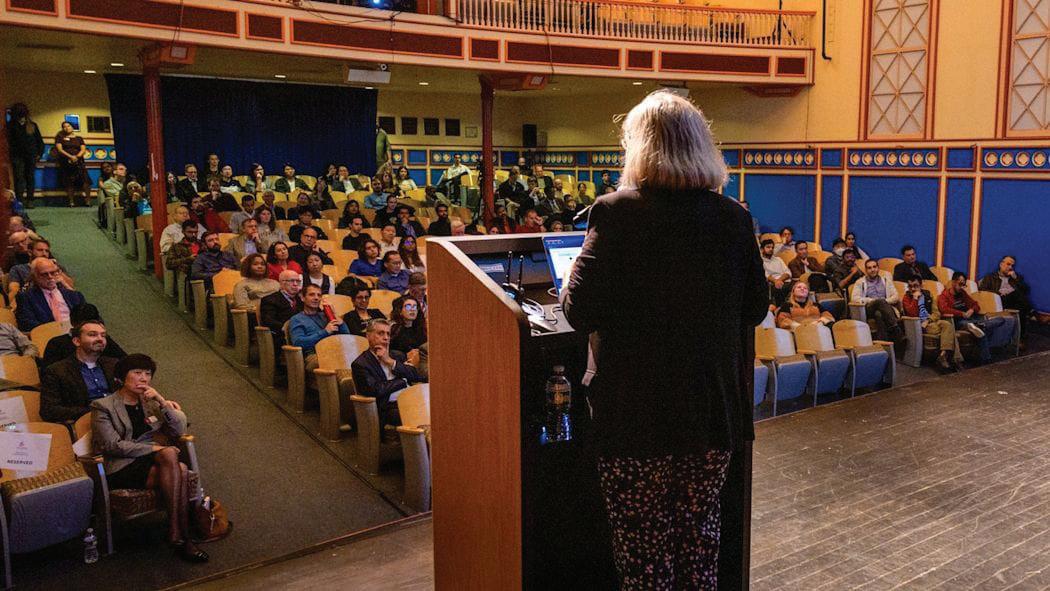
Stevens hosts Undergraduate Conference for Women and Gender Minorities in Physics
BY JOSEPHINE CHOONG, SPORTS EDITOR
From January 24 to 26, Stevens had the honor of hosting the American Physical Society (APS) Conference for Undergraduate Women and Gender Minorities in Physics (CU*iP). It supplied an opportunity for students to be surrounded by aspiring physicists and to learn from a variety of unique panelists.
The purpose of the conference was to allow students to find mentors and network with peers, as well as provide them with an opportunity to explore career
A spotlight on the women’s workshops at the MakerSpace
BY TIANNA SPITZ, FEATURES EDITOR
The MakerSpace kicked off its third semester of women’s workshops on January 27, featuring a hands-on DIY fidget spinner event in the second-floor ABS Engineering Center. From 6 to 8 p.m., the MakerSpace collaborated with the Machine Shop, a sister space that houses machinery and overlooks the MakerSpace, to host the women-centered program using in-house materials and 3D-modeled designs. The fidget spinner event, as well as the other women’s workshops run by MakerSpace student employees, provide step-by-step guidance on drawing, designing, and machining products from scratch.
pathways by providing information about graduate school and professions for physics. The event also gave them the chance to share their experiences, advice, and ideas. APS specifically encouraged women, gender minorities, Black/African American, Latino, Indigenous, community college, and first-generation college students to attend.
This year marks the first time CU*iP was held at Stevens. The conference was also hosted by 15 other universities and was attended by about 100 students from nearby universities and colleges. Dr. Ting Lu, who spearheaded the organi-
zation of CU*iP, described how it started with a proposal to APS with Stevens as a host site. The planning process started over a year ago and was a cross-office collaboration between the Physics Department, the President’s Office, and the Office of the Provost. The process began with an atlarge committee that later split into subcommittees. Some planning components included arranging hotel accommodations, figuring out shuttle services, designing conference items of merchandise, and inviting speakers and panelists with a wide array of expertise in both academia and indus-
Stevens Panhellenic Council hosts DEI panel
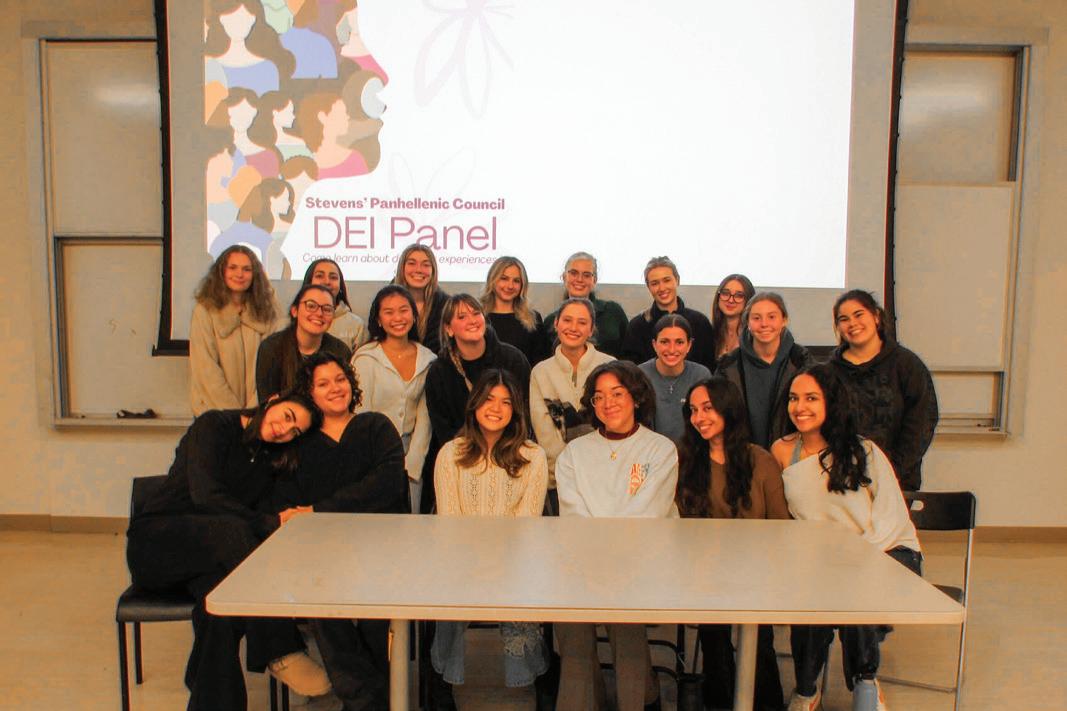
try. Michel Inman, a PhD candidate who led the swag subcommittee, commented on how she met with undergrad students every week to design buttons and other items. After a preliminary approval, the merchandise was sent off to marketing for brand approval.
CU*iP kicked off with afternoon tours and welcoming remarks. Each day of the event featured activities such as workshops and panel discussions covering topics from the quantum industry to physics pride.
For example, a series of panels dubbed Plenary Talk
BY SERENA PANUCCI, CONTRIBUTOR
The cost of eggs has increased significantly over the past few months, jumping from around $3.50 in late November 2024 to $5.29 in January for a dozen eggs, according to U.S. Bureau of Labor statistics. Consumers nationwide are feeling the strain as their supermarket bills rise. The sharp increase has caused concerns about food affordability, especially for people who rely on eggs as a primary source of protein. Along with the impact this has had on customers, businesses like bakeries and restaurants are also struggling with the higher prices, forcing some to raise the prices of their menus or even potentially cut back on egg-based products. The cause of this is the outbreak of avian influenza, commonly known as bird flu, which began in the United States in 2022 but experienced its largest outbreak in October of 2024, affecting over 100 million egg-laying birds. The first case of avian influenza dates back to around 1878 in northern Italy. It was described as a “contagious
SEE EGGS PAGE 2
TikTok ban sparks freedom of speech concerns
The MakerSpace Wom en’s Workshops program was awarded the 2024 “Program of the Year for Educational Impact” and represents a joint collabo ration with the Director of the MakerCenter, Paul Mc Clelland, and Class of 2026 members and machine shop employees Nataly Jimenez and Alicia Kearney, and are aimed to orient the MakerSpace as an inclusive space. Featuring monthly events blending introductory and focused sessions, women’s workshops prioritize familiarity with the goal of welcoming women/non-binary students to explore the creative space.
MakerSpace employee and Society of Women Engineers (SWE) E-Board member Jeylan Jubran, a 2/4 Industrial and Systems Engineer, staffs the front desk to help with student projects when she’s not troubleshooting the machines. Jubran gained
SEE MAKER PAGE 3
The fidget spinner event was the first women’s workshop of the year, building from introductory MakerSpace skills while incorporating new skills from the machine shop. This was only the latest women-oriented event of the series, which has been an ongo ing initiative since 2022.
ANGELKOSKA, CONTRIBUTOR
On December 3, the Stevens Panhellenic Council (SPC) held its first speaker event, inviting the Stevens community to hear diverse voices share their Greek life experiences and thoughts. In the past, each sorority has hosted its own diversity and inclusion event or workshop organized by its respective Vice President of Diversity and Inclusion (VPDEI). However, this was the first event where all sororities—Alpha Phi, Delta Phi Epsilon, Phi Sigma Sigma, Sigma Delta Tau, and Theta Phi Alpha— came together.
the first of its kind, featured speakers from each sorority involved. The event was planned by SPC’s VPDEI, Henita Sharon Lawrence. When asked what inspired her to create an event like this, she shared that growing up, she often sought powerful role models she could see herself in. After joining Greek life, she found herself surrounded by talented, bright individuals from all walks of life. She wanted this event to provide the Stevens community, especially its women, with the opportunity to see that Greek life has a space for everyone.
SEE DEI PAGE 3
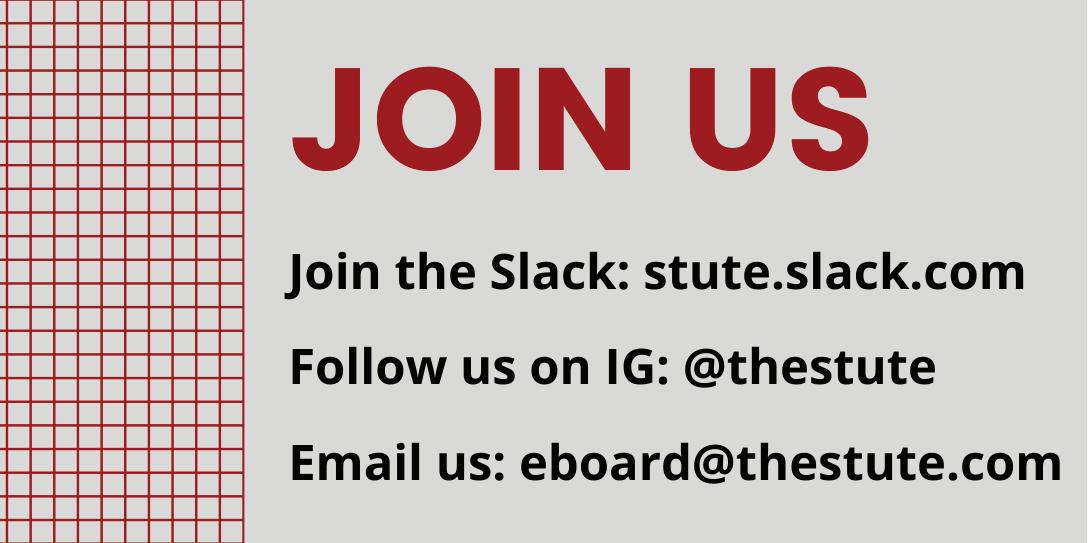
BY JEREMIAH CHINWENDU, MANAGING EDITOR
TikTok’s fate in the U.S. remains uncertain after a recent executive order signed by President Trump extended the timeline for its potential ban by 75 days, allowing time for a 50 percent ownership deal with the U.S. This move follows the Supreme Court’s unanimous decision upholding the constitutionality of a congressional ban on the app, citing national security concerns with the app’s data practices and its parent company, ByteDance’s, ties to the Chinese government. While the app’s 170 million American users may breathe a temporary sigh of relief, the extension makes it clear that the fight over TikTok is far from over.
In November 2017, ByteDance acquired Musical. ly and merged it with TikTok, equipping the app with an algorithm that encourages binge-watching and maximal engagement. The algorithm, which personal-

izes content based on user behavior, has helped the app gain global traction and become a dominating force in pop culture, impacting everything from music charts to marketing strategies. Artists have used the app to release their songs and propel their popularity, encouraging record companies to tailor song releases to the app’s trends. Businesses, both big and small, leverage the app’s advertising algorithm to push their products to the public, finding partnerships with influencers and creating content of their own. The app has had the most significant impact on digital content creation, giving careers to countless new content creators and introducing the public to new genres of entertainment. As the app has maintained its impact on pop culture for as long as it has, its influence has spread to politics, activism, and mainstream media. Acting as a news outlet, source of income, and en-
SEE BAN PAGE 3
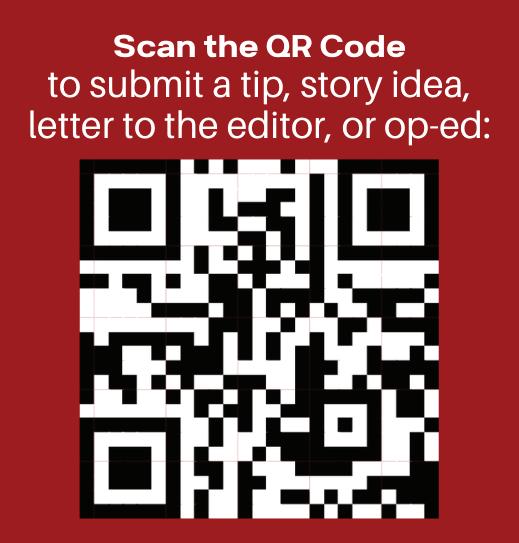
PHOTO COURTESY OF MEGAN BIRNS
PATH
CONTINUED FROM PAGE 1
Executive Board
EDITOR-IN-CHIEF.....................................ISABELLA ZIV ‘25
BUSINESS MANAGER...........................TANYA AVADIA ‘26
MANAGING EDITOR..............JEREMIAH CHINWENDU ‘25
LAYOUT EDITOR...............................JIYA JAISINGHANI ‘27
OUTREACH CHAIR.........................................AVA WANG ‘25
DIGITAL MANAGER..................................ABBY JACOBS ‘27
SECRETARY.........................................NICOLE GIARDINO ‘25
HEAD COPY EDITOR....................EVAN PAPAGEORGE ‘26
NEWS EDITOR........................................BEN KNOBLOCH ‘25
SCIENCE EDITOR.................................RIYANA PHADKE ‘27
OPINION EDITOR...................................TASHA KHOSLA ‘25
SPORTS EDITOR.................................CAMRYN WINANT ‘28
FEATURES EDITOR..................................TIANNA SPITZ ‘27
PULSE EDITOR.......................................MIA PETROLINO ‘25
Editorial Board Operations Board
HEAD PHOTOGRAPHER RAFAEL LEE LI ‘25
Layout Team
ASSIS. LAYOUT EDITOR...........................SHREYA ROY ‘27
ASSIS. LAYOUT EDITOR...............EILIYAH SAROWAR ‘28
DELIVERY BOY.........................................JONATHAN LAI ‘28
Staff & Contributors
Gabriela Angelkoska
Anthony Curcio-Petraccoro
Serena Panucci
Martina Franz
Christina Thomas
Viktor Palmer
Prisha Vagvala
Itai Geller
Jeylan Jubran
Erin McGee
Jack Scherban
Stephen Pachucki
Megan Birns
Christa Ruiz
Emily Martinez
Fiona Shi
NOTICE A MISTAKE? Email us at eboard@thestute.com.
All opinions and editorials reflect the views of their respective author(s). No Part of The Stute may be reproduced in any form, in whole or in part, without the written consent of the Editor-in-Chief. Cited references of The Stute are permitted.
All members of the Stevens community are able to submit a Letter to the Editor to be published in The Stute. Letters must refer either to a piece published in The Stute or to The Stute in general and must be between 400 – 800 words in length. Submit letters to editor@thestute.com with your name and title (when applicable) or using our Google form. For writers who wish to write a Letter to the Editor anonymously, please see our policy on anonymity.
The Editorial Board reserves the right to choose whether or not to publish a submitted Letter to the Editor based on a majority rule vote, and additionally reserves the right to edit letters for clarity or request authors to revise. Provided that the author approves the final version, The Stute reserves the right to edit letters according to our copy editing procedures, defined in our policies.
All members of the Stevens community are able to submit a standalone opinion piece (otherwise known as an Op-Ed) to be published in The Stute. Op-Eds must be between 400 – 800 words, but longer submissions will be considered on a case-by-case basis. To submit an OpEd please email eboard@thestute.com with your name and title (when applicable) or using our Google form (tinyurl.com/submit-t0-stute). For writers who wish to write an Op-Ed anonymously, please see our policy on anonymity.
The Editorial Board reserves the right to choose whether or not to pub lish a submitted Op-Ed based on a majority rule vote, and additionally reserves the right to edit Op-Eds for clarity or request authors to revise. Provided that the author approves the final version, The Stute reserves the right to edit Op-Eds according to our copy editing procedures, defined in our policies.
For starters, it’s recommended that you avoid the commute to Hoboken if it is feasible. Other PATH stations—such as Newport and Exchange Place—will see an uptick in train frequencies to combat congestion at the World Trade Center. The Hudson Light Rail will provide transit to these stations. PATH estimates that a train will arrive at Newport Station every two to four minutes during rush hours, with a timetable of five minutes or less at Exchange Place.
For those unable to avoid Hoboken transit, the increased frequency will also take effect on the 126 Bus Route from Washington Street in Hoboken to Midtown Manhattan. However, it is recommended that customers allow for additional time in their commute in anticipation of increased traffic through the Lincoln Tunnel. Alternative modes of transportation—such as the Midtown and Hoboken Terminal ferries—will operate on a 10-minute
PHYSIC
CONTINUED FROM PAGE 1
explored life as an astronomer, careers in medical physics, and journeys as a scientist. Moreover, there was another panel discussing summer research and grad school. One of the panelists, Stevens student Erin McGee, commented on how rewarding it was to talk with other students about their similar experiences applying for grad school and physics internships. Another noteworthy occurrence was 2025’s Millie Dresselhaus Keynote Speaker Dr. Meghan Anzelc, an executive leader in data and analytics project development and an Advisory Board member to APS’s Advancing Graduate Leadership initiative.
Lu noted that the conference was well received, commenting that many of the attendees said that they knocked it out of the park. She notes how networking at conferences is intimidating for students. The conference looked for a fun activity to help alleviate the stress of a conference. Each attendee was given a set of 10 buttons with the same design and a card with a set of 10 different designs. Thus, the attendees were encouraged to trade with each other to collect the full set. This activity helped break the ice and encouraged students to interact with each other.
“The most valuable aspect is that being in the same room with so many like-minded people and role models, they no longer feel isolated in their home institute,” Lu states. “It gave them a sense of community, a strong and supportive community.”
split. Each ferry takes its passengers to Midtown and Downtown Manhattan, respectively. Adjusted ferry prices to match PATH fares will be honored. However, customers are required to install the RidePATH app and acquire a digital boarding pass.
PATH addresses additional concerns some Hoboken residents and commuters may have. The restoration team will mitigate the effects of noise and debris. The Environmental Justice Review Board approved the proj
ect in October 2024. Frequent PATH updates will be posted on the Port Authority website, the RidePATH mobile app, and the various @PATHTrain social media accounts. While the commuter will face additional obstacles for the next month, subsequent luxuries are to be expected. The track enhancements anticipate smooth and punctual rides, and the station renovation offers more accessible and less hazardous paths to and from the train.
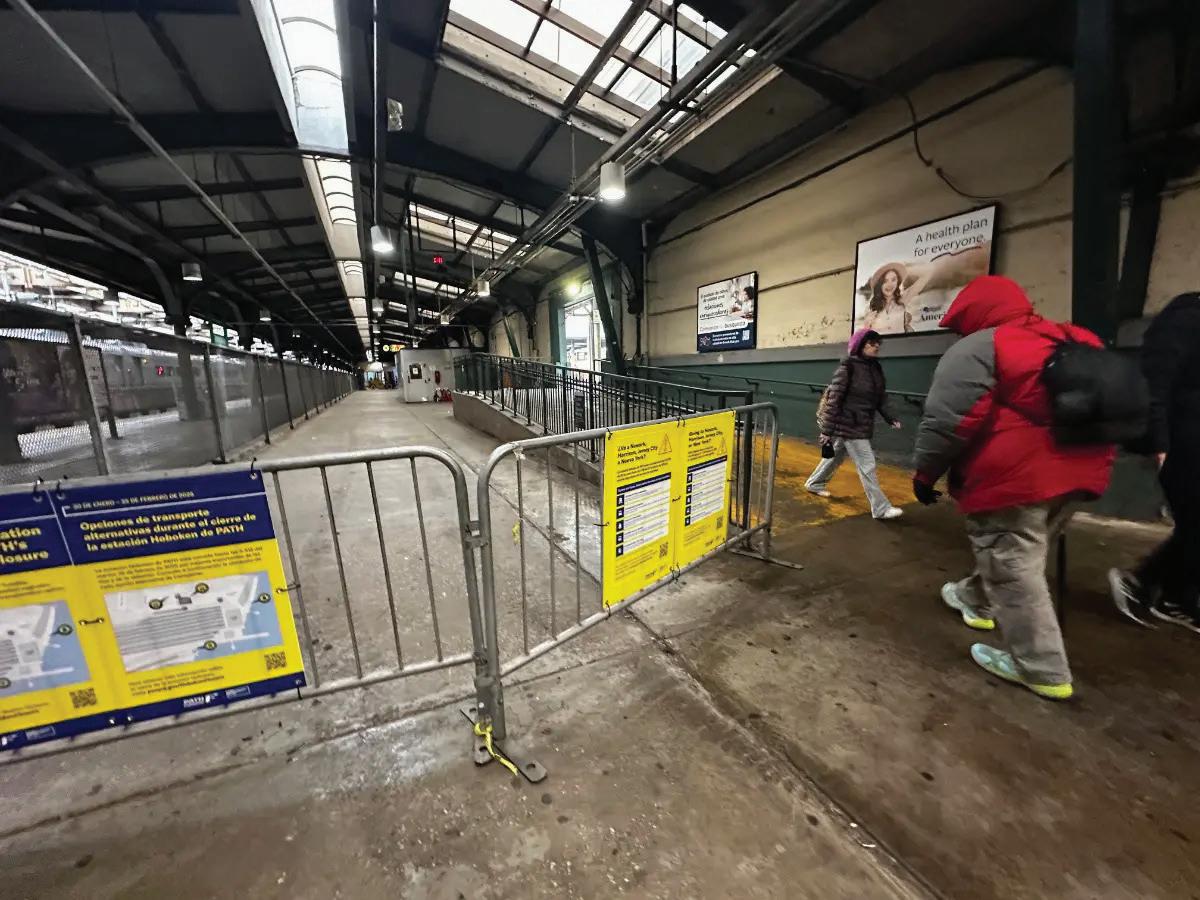
EGGS
CONTINUED FROM PAGE 1
disease of poultry associated with high mortality rates for hens.”
However, it was not until around 1955 that this disease became classified as what is now referred to as bird flu.
Today, the highly contagious virus continues to very clearly impact poultry farms. In order to slow the spread of the disease, farmers implemented protocols like the mass removal of infected flocks to prevent any further spread of the virus and to ensure the safety of the remaining flocks. With fewer birds laying eggs, the production of eggs has declined significantly and, therefore, caused prices to rise. Even flocks that have not been directly affected are struggling, as supply chain disruptions have made it harder to keep up with the high demand.
Beyond the direct impact on consumers, the outbreak has significantly disrupted the broader agricultural supply chain. Farmers are also facing increased expenses due to the heightened security measures that are necessary in order to attempt to contain the virus. Entire flocks of infested birds must be isolated to prevent the disease from spreading to healthy flocks.
In response to the crisis, the government and the poultry industry leaders are working to attempt to contain the outbreak and, therefore, stabilize egg pro-


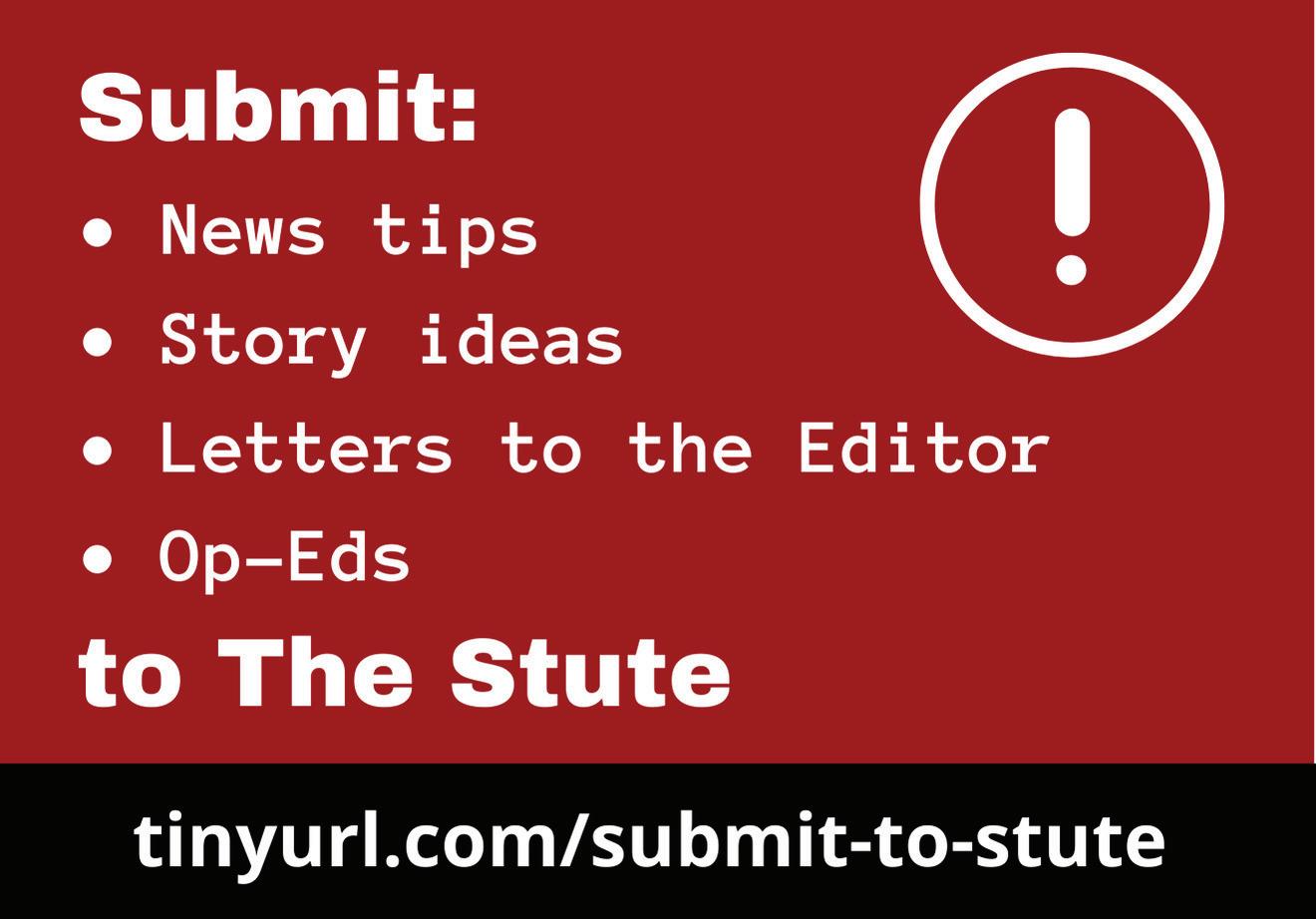
duction with the goal of restoring output to normal. Protocols have been put in place, such as strict biosecurity measures, increased monitoring in poultry farms, and more financial assistance for the affected farmers. According to the CDC, researchers are also looking into improved vaccines and strategies to protect bird flocks in the future. However, recovery takes time, and even with this intervention, the egg supply is unlikely to return to normal immediately. If the outbreak continues and is not able to be slowed down, egg prices could remain high for months, possibly going even higher, affecting the affordability as well as the availability of egg products for consumers nationwide. While prices may eventually decrease as the industry starts to recover, consumers will very likely continue to feel the impact of avian influenza in grocery stores for the foreseeable future. Until the production of eggs starts to stabilize, shoppers can expect continued changes in prices with possible shortages in certain areas. This outbreak serves as a reminder of just how vulnerable food supply chains can be to disease outbreaks. It is important to implement long-term strategies to protect food production from similar situations in the future in order to avoid financial strains on not just customers but also businesses and the overall poultry industry.
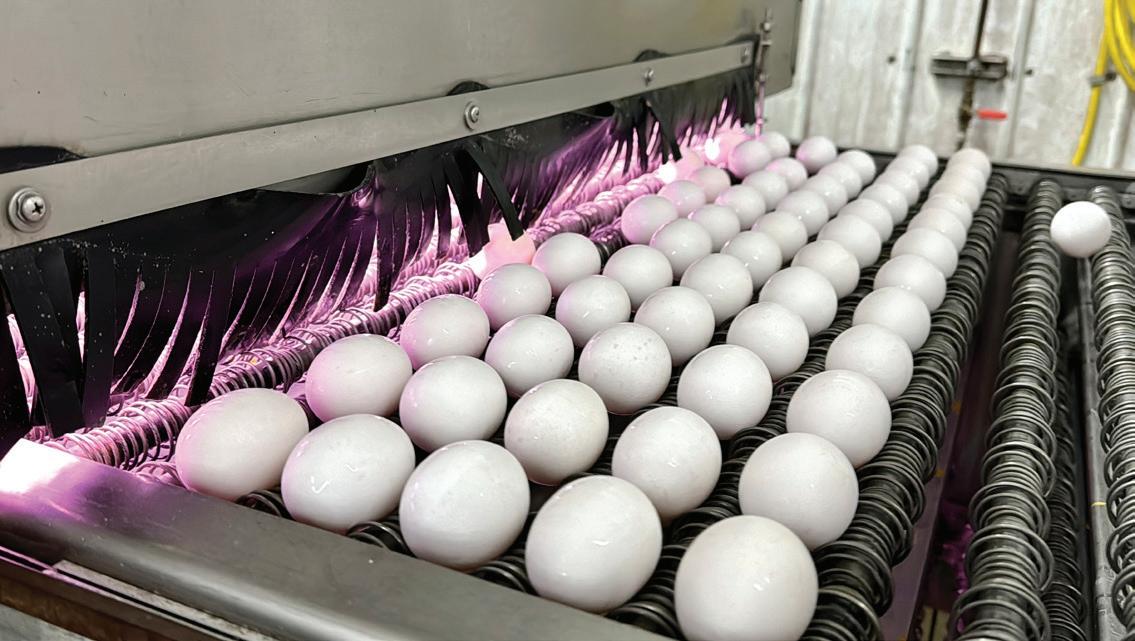

PHOTO COURTESY OF CAREN LISSNER FOR PATCH
PHOTO COURTESY NPR.ORG
MAKER
CONTINUED FROM PAGE 1
hands-on experience in MakerSpace after working the desk and assisting student projects and now manages women’s workshop outreach. “Now that we have stable attendance, we’re focusing on themes and more elaborate ideas,” says Jubran. She outlines the progression of the women’s workshop series from launch, mentions various joint SWE events to increase attendance and cover basic workshop skills, and spotlights the team’s current efforts to expand creativity with
themed workshops. Stevens launched MakerSpace in Spring 2021 as an aroundthe-clock student workshop for academic and personal construction projects. An open layout furnished with wooden work benches and equipped with machinery and tools creates a studio-quality environment. The MakerSpace offers diverse crafting and building materials, from automated tool cabinets, 3D printers, drill presses, soldering workstations, a vinyl cutter, a band saw, VR headsets, and an engraver, all of which are accessible to students who complete safety quizzes found on the MakerSpace Canvas shell. Student employees are avail-
News
able at the front desk between 2 and 6 p.m. to troubleshoot machinery and offer in-depth project consultations for emerging build ideas. The MakerSpace provides materials, equipment, and technical guidance to make the building process a creative sandbox for students of all majors.
The next women’s workshop features Valentine’s Day crafting this Monday, February 10, while a Star Wars-themed workshop, planned in collaboration with the Aerospace Club, is set out for May. The full semester itinerary can be found on MakerCenter’s Instagram as the Women’s Workshop series enters the Spring semester with great momentum.
DEI CONTINUED FROM PAGE 1
tertainment, the app has become an important part of billions of people’s lives around the world. Many of the 170 million Americans who use the app are college students. Those who stand to be affected by the banning of the app worry about the “implications of free speech and the creator economy,” writes Thea Felicity of the University Herald.
Dartmouth University reported that its students and faculty are torn by the government’s decision to ban TikTok, with Government professor Sonu Bedi stating that if the app constitutes an outlet for free speech, then its ban could suppress people’s online expressions. Some students recognize the security threat of the app, stating that the app’s ban won’t impact free speech significantly since there are many more online platforms that can be used the same way.
The ban on the app could have a negative impact on the lives of college students nationwide. A
large number of the content creators on TikTok are college students. Student creators at Duke University note that if they were to be forced to move their content to another social media platform for their content, it could be expensive and unsuccessful. Banning the app stands to impact student livelihoods, as many use the app as their sole source of income, with many using their wages to pay off their tuition and loans. TikTok also plays a role in campus engagement and activism, as school organizations use it to promote different innitiatives and embark on community outreach campaigns. In an interview with Inside Higher Ed, lawyer J. Israel Balderas acknowledged that the app allows students to “communicate and play a role in the marketplace of ideas.” He also noted that students fear that if the government can ban TikTok under the guise of protecting national security, then other social media platforms owned by foreign countries could face a similar fate.
Many business moguls and tech companies have placed bids to buy TikTok to save it from re-
moval from the U.S. market. Billionaires like Elon Musk, Kevin O’Leary, and Larry Ellison—Chief Technology Officer of Oracle— have all shown interest in buying the app. Other competition includes YouTuber Mr. Beast and Steven Mnuchin, the former Secretary of the Treasury under Donald Trump. Perplexity AI, Microsoft, and Oracle have all shown interest in buying the app as well. It remains unclear at this point what the fate of TikTok will be. As the app remains unavailable on all app stores, many have expressed concern over its future. Many wonder what kind of precedent this act could set for other platforms and expressions of free speech. Whether TikTok ultimately disappears from American phones or finds a legal lifeline, its impact on digital culture and society will not be easily erased.

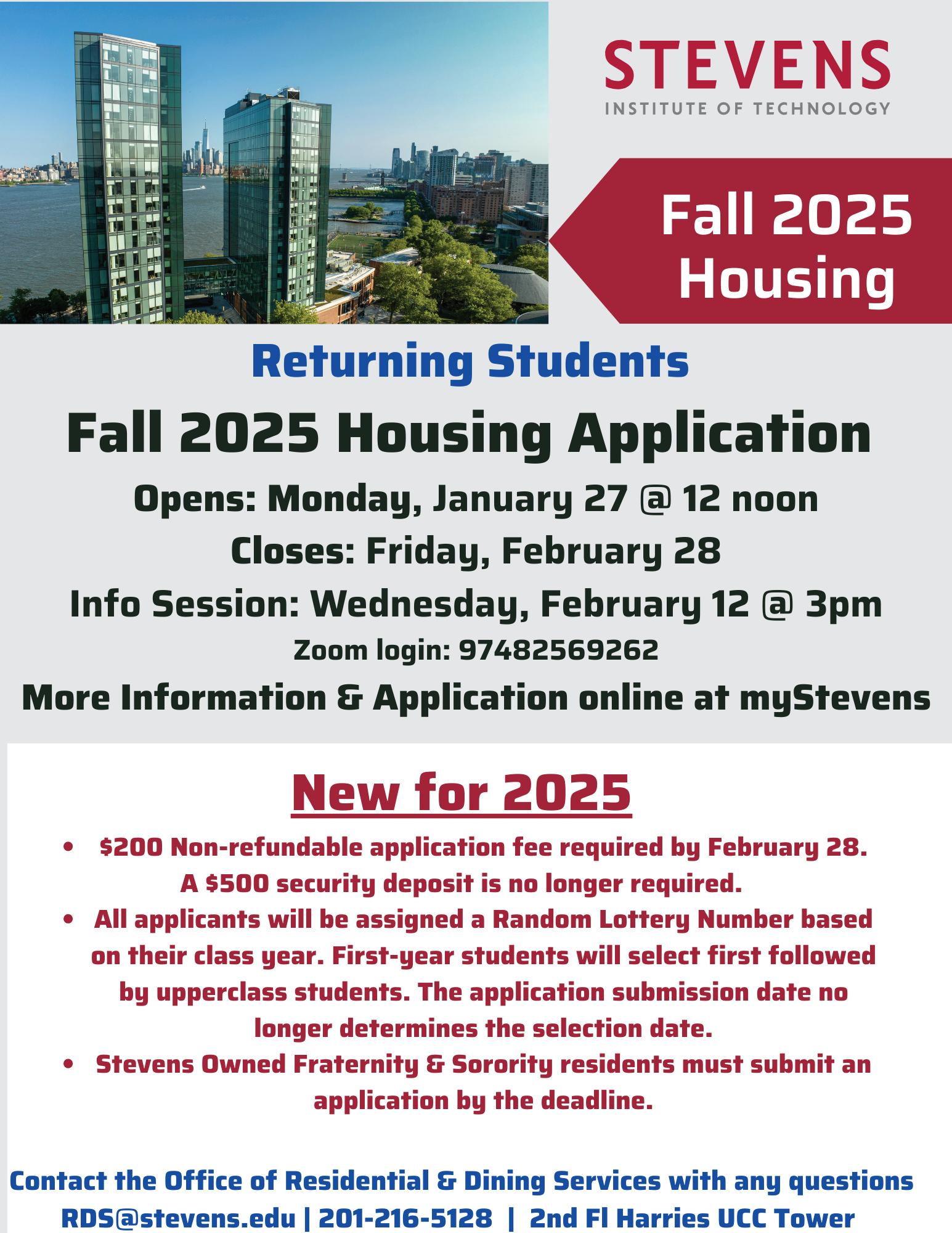
Attending the event, one could feel the atmosphere was filled with support and passion. The panel speakers shared personal insights and were deeply engaged with the audience. While there were many impactful answers, one particularly resonated: the message of change. Each speaker acknowledged that Greek life has historically had moments of exclusivity. However, they emphasized the ongoing efforts within the Stevens community and each sorority to change this narrative. The women spoke about feeling empowered to be part of that change — to be the faces and voices that lead the next generation of sorority women to know that there is a place for everyone.
Additionally, it was touching to see not only how much these women contribute to their respective chapters but also how much they have gained from their sisterhood. Each speaker recounted a powerful, emotionally evocative story about a sister who profoundly impacted their Greek life experience and, ulti -
mately, their time at Stevens.
The audience was also an integral part of the night, being engaged and thoughtful, which allowed the conservation to become personal. There was everything from raucous laughter to teary eyes when the speakers opened up about just how impactful their Greek life experience was to them.
In the end, it was a night filled with emotion, support, and, most importantly, sisterhood among the speakers and the audience. Ultimately, the event helped shift the perception of Greek life, shining a new light on the positivity and empowerment these women share together.
Lawrence reflects on being thankful to have been in a role that hopefully inspired people to be more confident in who they are, and she is especially grateful for her fellow SPC E-Board members and her sorority sisters who helped make this event possible. She states, “While this may be the first, it won’t be the last event of its kind. I’m excited to see Greek Life not only grow but transform — becoming a space where bold, inspiring women shape the future and ensure that every voice is heard.”
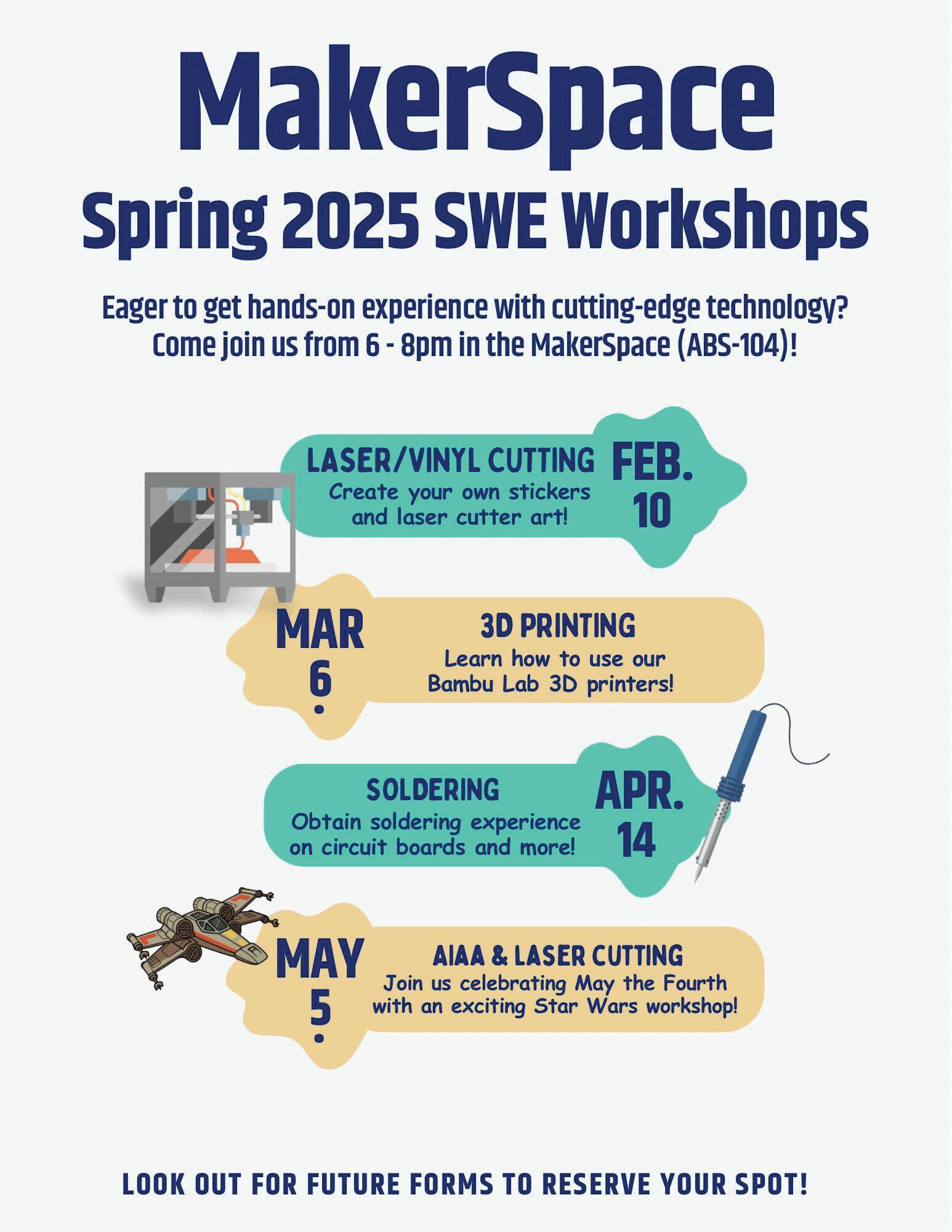


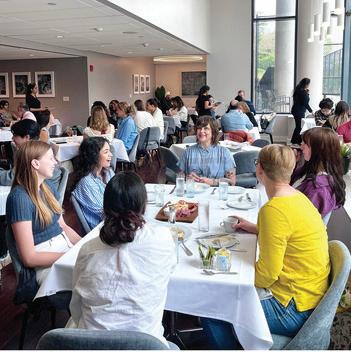
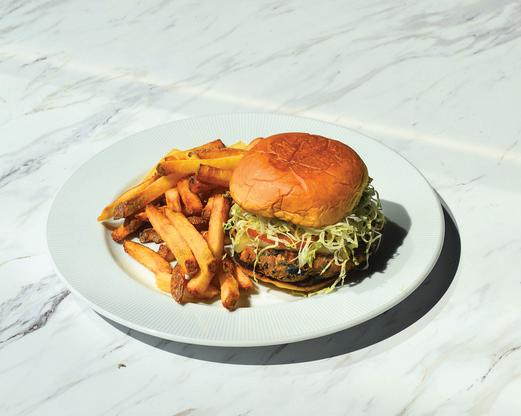

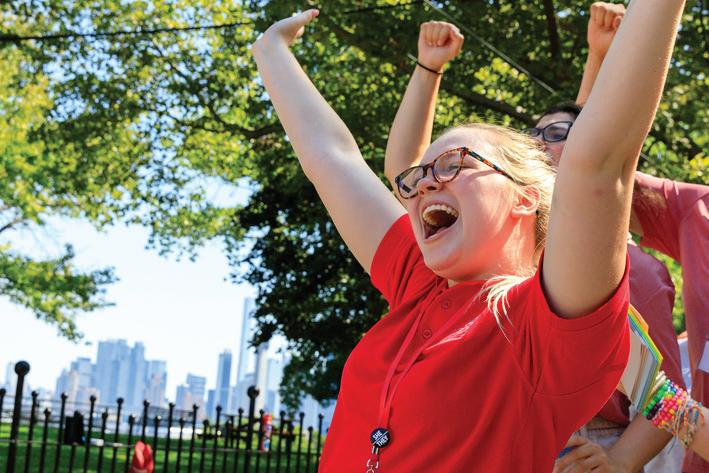
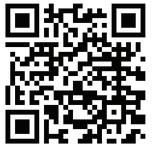

PHOTO COURTESY OF TECHPOLICY.PRESS
Feature: Spring 2025 Budget Meeting Recap
SGA Budget Committee: Kevin Pfundstein (VPF), Arthur Serra (AVPF),
Tanishka Kapoor(VPSI), Cara Leonard, Amanda LaFrancois, Aden Vishnesky, Disha Sanghavi, Edmund Yuen, Jenny Chen, and Osi Uga
Sebastian Sztolberg (Treasurer), Adrian Da Silva, Aiden Jackson, Anuska Pathak, Arjun Kapada, Armaan Seth, Benjamin Good, Christina Kerris, Leland Quaynor, Luke Brevoort, Madison Heller, Michael Moscello, Niranjana Saju Menon, Noah Cruj, Simran Dave, Tatiana Bunay, Victoria Okonkwo, Octavio Morales, Andrew Branco, Gavin Ng, Kristi Lu, Samuel Strassburger
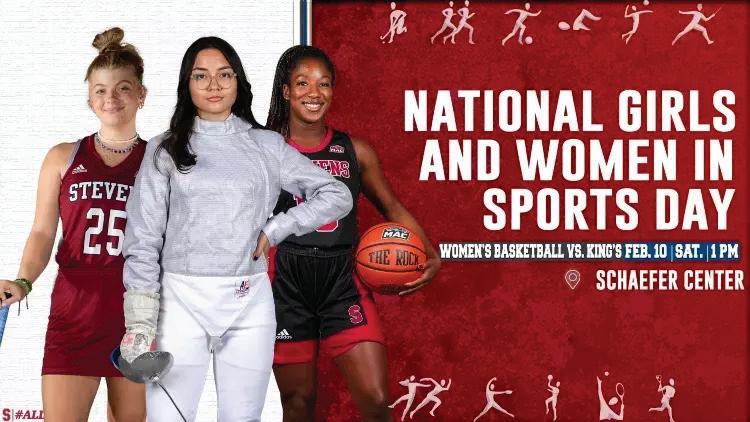
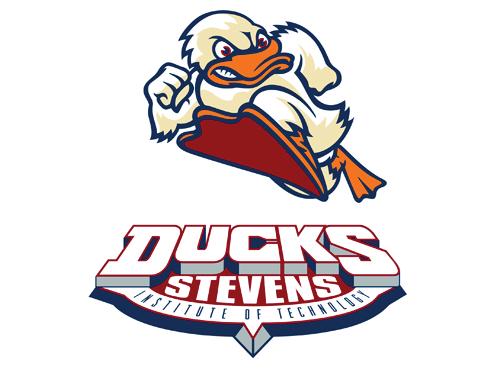
National Girls and Women in Sports Day and basketball victories against Lebanon Valley College
BY CHRISTA RUIZ, SPORTS WRITER
On Saturday, February 1, The Stevens Department of Athletics celebrated the 39th Annual National Girls and Women in Sports Day (NGWSD) when the women’s and men’s basketball teams hosted Lebanon Valley College.
NGWSD was started in 1987 as a way to recognize women’s sports and served more as a remembrance of Olympic volleyball player Flo Hyman. Hyman was dedicated to fighting for equality in women’s sports, and she had many notable athletic accomplishments.
Now in 2025 and marking its 39th anniversary, NGWSD has grown to be a day that com -
memorates the numerous ways that sports encourage girls and women to excel and discover their potential. Sponsored by the Women’s Sports Foundation, the day celebrates the contributions of individuals and organizations that advocate for and support women and girls in sports. This includes those fighting to preserve Title IX and promote gender equality, athletes who use their influential platforms to foster excellence, and coaches dedicated to nurturing girls’ and women’s abilities. The confidence, strength, and character developed through sports equip girls and women with essential skills to emerge as formidable leaders in sports and beyond. Each year, over 300 events are hosted by
schools and community-serving organizations across all 50 states, reaching an estimated 200,000 girls and women.
Before the men’s basketball game at 1 p.m., Stevens Athletics hosted a pregame clinic that started at 11 a.m., offering instruction in various sports for girls and boys ages eight and up. This free event, open to the public, was the ninth of its kind at Stevens. Participants engaged in fun sports clinics alongside Stevens student-athletes and coaches and were encouraged to support the Ducks at the games that followed.
Both basketball teams delivered outstanding performances that day. The men’s game at 1 p.m. ended with a final score of 71-62 over the Lebanon Val -
ley College Dutchmen, with the Ducks coming back from a 14-point deficit in the first half.
Graduate student Mike Goodall and sophomore Tommy Scholl lead the team with 17 points each. Senior Jack Spellman contributed to the team’s win with a double-double consisting of 12 points and 10 rebounds. The women’s game at 3 p.m. ended with another win for the Ducks, totaling a final score of 50-47. Junior Leyla Castro led the women’s team with 16 points, 14 of which she scored in the second half, with 10 of those being in the fourth quarter. Senior Lucy Alberici also scored 16 points, with other game leaders being junior Olivia Schubiger with eight points and first-year Fiona O’Boyle with six.
Track and Field comes out with successful times at Alvernia PLEX Shootout
BY CAMRYN WINANT, SPORTS EDITOR
The men’s and women’s track and field teams hit first place and personal and season-best times at the Alvernia PLEX Shootout on February 1st in Reading, PA. Both teams ran at 10 a.m., going up against other MAC competitors, including Alvernia, Arcadia, Delaware Valley, FDU-Florham, Hood, King’s, and York.
With no team score, many of the runners on the men’s team landed personal bests. Firstyears Ethan Stallone and William Ladd finished in the men’s 60m hurdles’ prelims with personal bests with times of 8.54 and 8.89. Graduate student Liam Concannon and first-year Connor Efinger both finished in third, Concannon in the men’s mile with a time of 4:30.37 and Efinger in the triple jump with a distance of 11.86 meters. Continuing with their excellent performance, junior Kyle Savino finished second at 23.3 seconds in the men’s 200m.
There were a handful of new personal and season records in the men’s 800m and 500m, with seven of the men’s runners hit-
ting impressive times. Junior Danny Jutras landed first in the 800m (1:58.87), with first-years Enrico Parrella (fifth, 2:00.72) and Matt Hodorowski (12th, 2:03.81) on his tail, both finishing with personal bests. In the 500m, graduate student Bryan Onody and first-year Cillian Griffin notched personal bests, with Onody in sixth at 15:59.45 and Griffin in 10th at 16:27.20.
Junior Brandon Kiefer jumped a personal best in the high jump at 1.78 meters, landing fifth, and senior Cullen Grady landed a season-best in the pole vault at 3.32 meters high. Ending the field events, junior Cooper Kinsley placed ninth in the shot put with 11.73 meters, and sophomore Gabriel Kovach ended with 9.92 meters — setting a season-best.
Starting with the women’s field events, juniors Alexis Merola and Stephanie Ryazanova landed first and ninth in the pole vault at heights of 3.30m and 2.70m, respectively. Junior Caroline Tighe won first in the high jump, followed by junior Maggie Previgilan and graduate student Allie Canciani, who tied for fifth and seventh, and sophomore Isabella Shanley
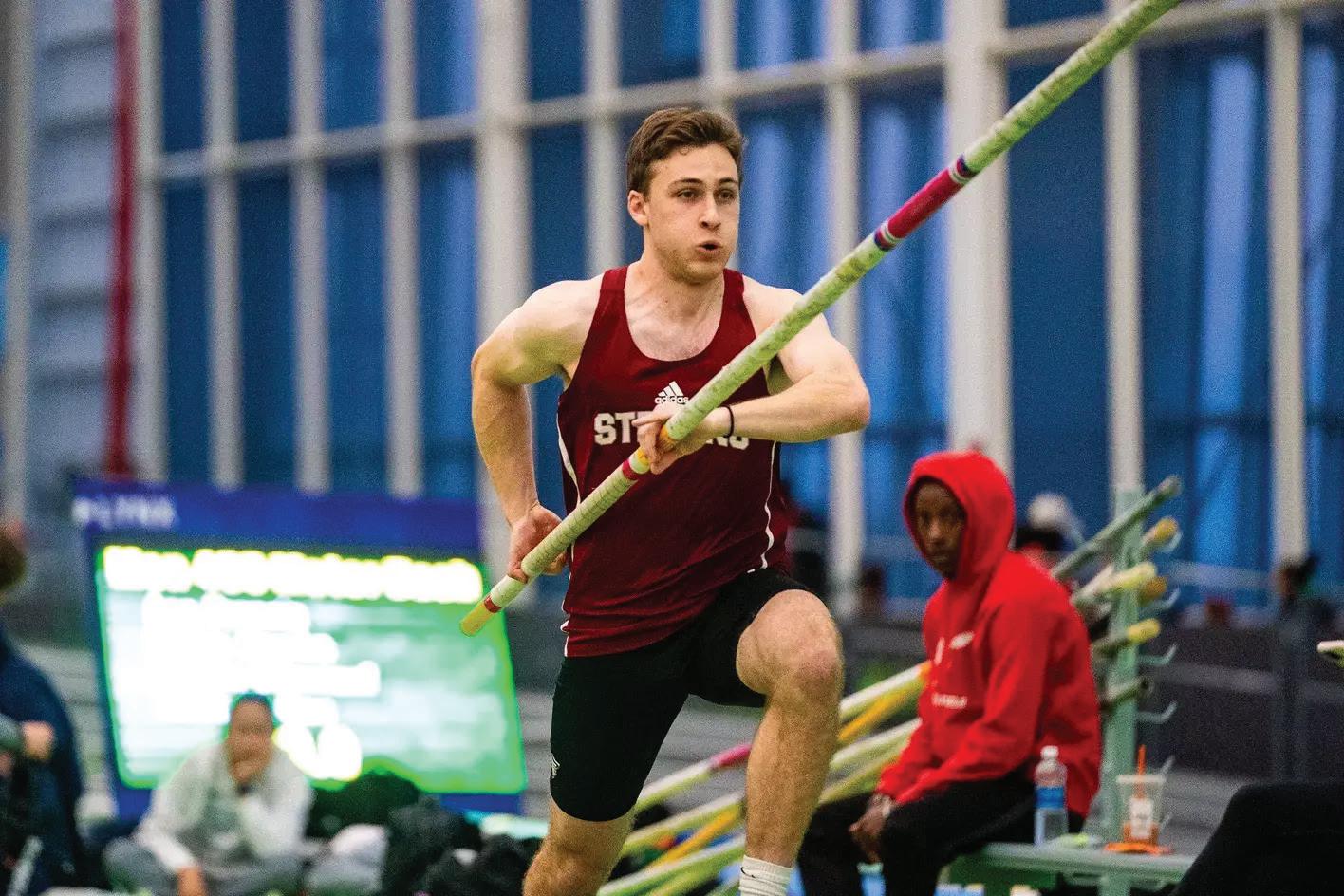
at eighth. Tighe continued her success in the field events with a season-best distance of 4.78m in the long jump. The women’s team saw successful times in the women’s 5000m, 60m hurdles, the mile, 800m, and 200m. Graduate student Fionna Feerick landed a personal best at 19:18.18, and senior Samantha Rozek landed a season-best at 20:07.22 in the 500m. In the 60m, Shanley took first in both the prelims and finals with personal best times of 9.82 and 9.74. Sophomore Kaitlyn Adams set a personal best in the mile (fifth, 5:38.80), soon after she was junior Gianna Adamo (17th, 6:25.30). Runners in the 800m included first-year
Isabella Gabay (fifth, 2:29.54), juniors Taylor Enes (seventh, 2:34.64) and Isabel Vogel (19th), Canciani (18th), and sophomore Kate Cen (24th), with Adams setting a personal record. Another personal record was set by junior Lauren Alley in the 200m at 16th with a time of 29.04.
Ending the meet, the team of Ryazanova, Alley, Shanley, and first-year Anya Sadowski placed third in the 4x200m, clocking in at 1:51.88. The team of Canciani, Cen, Enes, and Vogel landed second in the 4x400m at 4:35.58. The men’s and women’s track teams will be seen continuing their hot streak at the Big Apple Invite at Staten Island, NY.
STEVENS SCOREBOARD
FEB
FEB 11
College (Pa.) Hoboken, NJ 7 p.m.
WED, FEB 12
WOMEN’S AND MEN’S BASKETBALL DeSales University Hoboken, NJ 7 p.m. Center Valley, PA 7 p.m.
THU, FEB 13
WOMEN’S AND MEN’S SWIMMING
MAC Championships Day 1 Time and Location TBD
The U.S. withdraws from the WHO: what this means for global health
BY RIYANA PHADKE, SCIENCE EDITOR
On January 20, 2025, President Donald Trump signed an executive order to withdraw from the World Health Organization (WHO). While this announcement was not a surprise, it was shocking to much of the public health community. This executive order is the president’s second attempt to pull the U.S. out of the organization, as his first plan was reversed by former President Joe Biden.
The WHO is an organization shaped by its members — 194 countries set health priorities and make agreements about how critical data, treatments, and vaccines should be shared during international emergencies. The agency, which is part of the United Nations, was founded in 1948 and is the cornerstone of health efforts, with a multinational staff that works against communicable and chronic diseases.
In the official executive order, it was cited that the U.S. had already begun to notice a withdrawal from the WHO in 2020 due to the organization’s mishandling of COVID-19, its failure to adopt urgent measures, its inability to demonstrate independence from inappropriate political influence, and for unfair demands of payments from the U.S. For decades, the United States has been one of the most influential players in global health policy, shaping WHO initiatives and funding critical programs. The
U.S. is one of the WHO’s largest financial contributors, having provided $1.1 billion in 2022 and 2024 combined, accounting for roughly one-fifth of the WHO’s budget. The decision to withdraw raises serious concerns about how global health initiatives will be funded and implemented, particularly in low-income countries that rely on WHO programs for disease control, vaccinations, and emergency response.
Additionally, the withdrawal could isolate the U.S. from key health collaborations, affecting federal agencies such as the National Institutes of Health (NIH), the Food and Drug Administration (FDA), and the Centers for Disease Control and Prevention (CDC). These agencies have historically worked closely with the WHO to set global health standards, share research, and combat infectious diseases. Without these partnerships, the U.S. may lose access to critical international data on emerging health threats, slowing responses to pandemics and public health crises.
Beyond public health policy, the U.S.’s exit from the WHO could severely impact scientific research and innovation. The WHO facilitates global clinical trials, coordinates vaccine development, and provides funding for disease surveillance programs. U.S. scientists, public health officials, and medical researchers rely on WHO databases, guidelines, and research networks to track outbreaks, study emerging diseases, and develop new treat-
ments. For example, many U.S.based researchers participate in WHO-led clinical trials for dis eases like malaria, tuberculosis, and HIV/AIDS. Without WHO partnerships, U.S. scientists may face funding challenges and de lays in accessing new treatments. The U.S. has historically shaped international health regulations and influenced WHO priorities. Without a seat at the table, the U.S. will have less say in how global health crises are managed, potentially leading to weaker global disease preparedness.
Lawrence Gostin, an expert in national and global health law at Georgetown University, notes that things are still up in the air, as Congress could block the with drawal of the U.S. or that the Trump administration could use the threat of departure as a way to force significant reform in the WHO. He states, “If he does a deal to make the WHO more resilient, robust, and accountable, he would be doing the U.S. a favor and the world a favor.” Remaining a member would enable Trump to push for a candidate he likes as successor to Tedros, whose term ends in 2027. If Trump goes through with the plan to withdraw, Gostin says, “it would be catastrophic for U.S. national interests and security.”
SpaceX Starship explodes over Turks and Caicos

BY ERIN MCGEE, SCIENCE WRITER
The coming months will determine the fate of global health and whether the U.S. chooses to be a part of the conversation. Either way, experts agree that the decision will have a lasting impact on research, policy, and global cooperation.
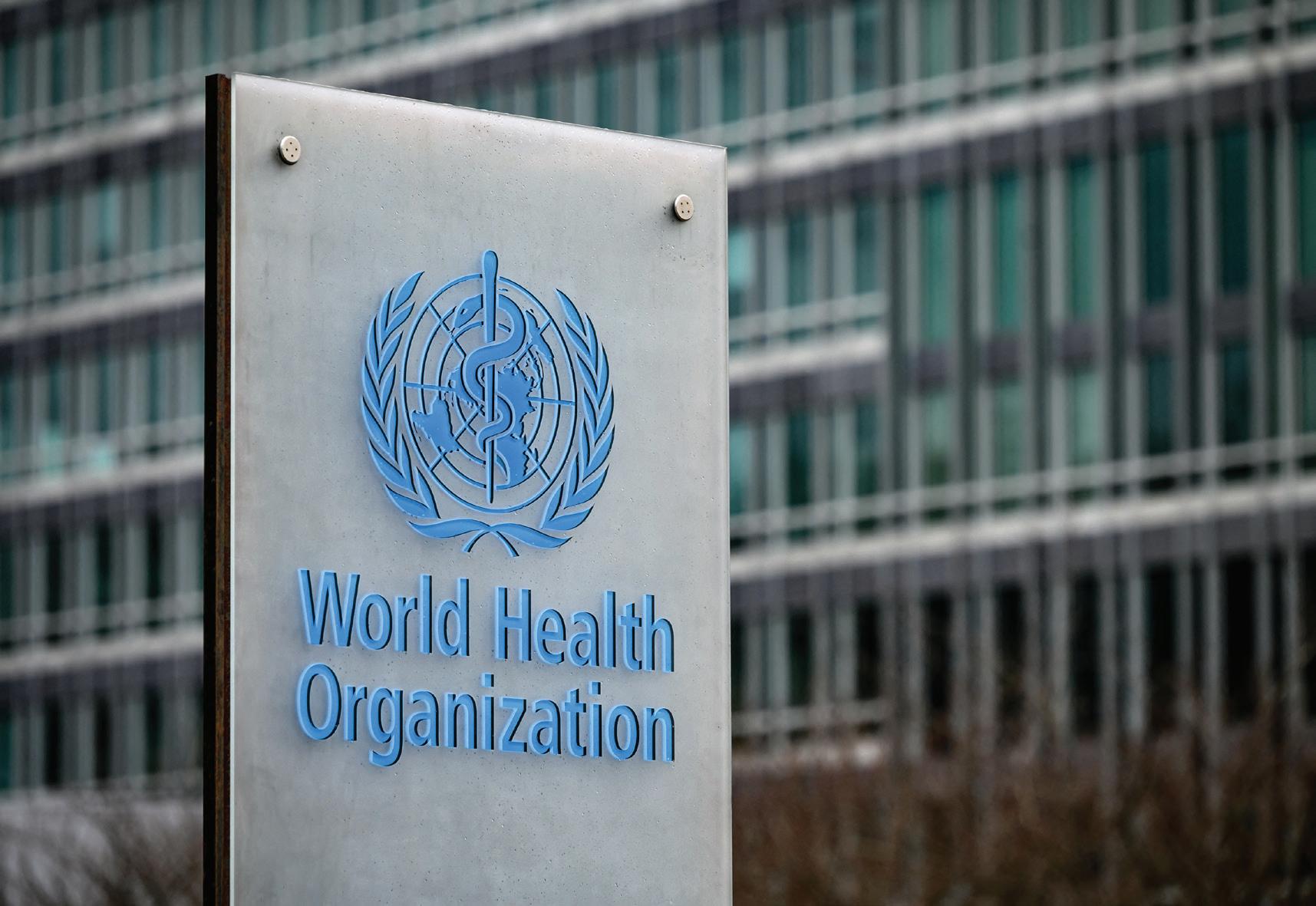
BY EVAN PAPAGEORGE, HEAD COPY EDITOR
In early 2025, skywatchers are in for a treat: a rare celestial event known as a “planetary parade.” In this phenomenon, multiple planets align in the night sky, offering a spectacular visual experience. From Earth’s perspective, several planets appear close together, tracing a line across the sky due to their positions along the ecliptic plane.
From late January through February, six planets—Mars, Jupiter, Uranus, Venus, Neptune, and Saturn—grace the evening sky. Mercury joins the alignment as February progresses, culminating in a seven-planet parade on February 28. While Venus, Mars, Jupiter, and Saturn are easily vis-
ible to the naked eye, Uranus and Neptune require binoculars or a telescope for observation. Mercury’s visibility is often challenging due to its proximity to the horizon and the Sun’s glare.
The optimal time to observe this alignment is shortly after sunset. Observers should look toward the southwestern sky to spot Venus and Saturn, with Jupiter appearing higher in the southern sky and Mars in the southeast. Venus is the brightest planet, often called the “Evening Star,” while Mars exhibits a distinct reddish-orange hue. Though less luminous than Venus, Jupiter and Saturn are still prominent and can be distinguished by their steady light, in contrast to the twinkling of stars.
Light pollution can be a challenge for those in urban areas like
Hoboken. To ensure a good view of this spectacle, find a location away from city lights, such as a local park or a higher elevation point with an unobstructed view of the horizon. Allowing your eyes to adjust to the darkness for about 15-20 minutes can improve visibility. Using a stargazing app or star chart can also help identify the planets and understand their positions relative to each other. This planetary alignment is not just a visual delight but also a reminder of the dynamic nature of our solar system. While not exceedingly rare, such events are infrequent enough to warrant attention, especially when multiple planets are involved. The last time a similar alignment occurred was in June 2024, but only two planets were easily vis-
About three weeks ago, on January 16, just after 5:30 p.m., an unmanned SpaceX rocket known as Starship took off from South Texas. It reached the upper atmosphere until about eight minutes later when residents of the Bahamas reported seeing debris streaking through the sky. Starship, which was planned to re-enter the Indian Ocean, had lost communication with the company, and SpaceX later confirmed that their vessel had undergone “rapid unscheduled disassembly” (that it had exploded).
Starship is one of SpaceX’s most publicized and well-known projects. The spacecraft is designed to be a fully reusable rocket with the goal of being used to take manned missions from Earth to the Moon and even beyond and support up to 100 people. It has two main parts: the Super Heavy booster that helps the craft gain altitude and the Starship spacecraft that goes with it.
Residents were given a number to call if they found debris on their property and instructed not to touch it. While several social media reports were said to show debris on the island, these were not able to be confirmed, with some experts suggesting that much of it fell into the ocean. Some researchers have also suggested that damage could be caused by the ‘sonic boom’ that occurs when debris traveling faster than the speed of sound re-enters the atmosphere.
“This event was over one of the most populated areas in the Caribbean, with one of the largest things we’ve ever seen re-enter the atmosphere,” says Benjamin Fernando, a postdoctoral fellow in the Department of Earth and
ible without special equipment. The next opportunity to witness such a spectacle won’t happen for several years, making this an opportune moment for amateur and seasoned astronomers to observe the dance of the planets.
In addition to the planetary parade, February’s night sky offers other celestial events worth noting. On February 12, the Full Snow Moon will illuminate the sky, providing a bright backdrop for the planetary alignment. Later in the month, on February 16, Venus reaches its peak brightness for the year, making it an even more striking feature in the evening sky. These events and the planetary alignment make February 2025 gratifying for stargazing enthusiasts.
For those interested in capturing the event, a camera with man-
Planetary Sciences at Johns Hopkins who studies seismology. “So if (sonic boom property damage) is going to happen, it’ll be an event like this that does cause it.” There were also concerns about the atmospheric pollution that the event could cause. Researchers have predicted that as much as 45.5 metric tons of metal oxides and 40 metric tons of nitrogen oxides could have entered the atmosphere. These types of metals are well known for causing damage to the ozone layer, which protects humans from harmful UV rays. There was also a large impact on air travel, with the website FlightRadar24 reporting that dozens of flights were rerouted out of the way of debris.
SpaceX has had its fair share of recent explosions. Out of the seven total Starlink tests, four of them have been successful, with another explosion that occurred over the Indian Ocean last March.
The Federal Aviation Administration (FAA) is allowing SpaceX to conduct the investigation into why the craft failed, and afterward, the Administration plans to report a detailed list of changes that SpaceX needs to make in order to clear Starship for another flight. SpaceX’s CEO, Elon Musk, has been extremely critical of the FAA in the past, even calling for the former director’s resignation as recently as September. It is unclear what Musk’s role in the current administration, as well as the recent plane crashes in the United States, mean for the Administration in the future.
As of right now, it is not clear whether this event will spell problems for the Starship project. Currently, the Starship rocket is grounded until the investigation concludes and potential damage is assessed.
ual settings and a tripod are easy setups to photograph the alignment. Using a more prolonged exposure can help capture the faint light of the planets against the twilight sky. It’s essential to check the weather forecast to ensure clear skies and plan accordingly. Dressing warmly and bringing along a star map or a stargazing app can enhance the experience, providing context and additional information about the celestial objects on display.
The planetary parade of early 2025 offers a unique opportunity to witness a rare alignment of planets in our solar system. Whether an avid astronomer or a casual observer, looking up at the night sky this February can provide a profound connection to the cosmos and a deeper appreciation of our celestial mechanics.
PHOTO COURTESY OF THE WASHINGTON POST
PHOTO COURTESY OF CNN
Six more weeks of winter

BY AVA WANG
Yesterday, I experienced the joy of making it to Gobbler’s Knob to witness Punxsutawney Phil’s prognostication of the meteorological happenings for the next six weeks. The day began early — 1:30 a.m., to be exact — as the crew embarked on our final two-hour leg of the drive to Punxsutawney, running on only four hours of sleep. Only cars with limited and highly-coveted reservation are allowed up to the Knob, so most Phil fans must queue in lines at various supermarket parking lots to board the Punxsutawney school buses, which began running at 3 a.m. The weather was a luxuriously warm 20 degrees Celsius, and we came prepared: double layers of everything except socks (of which I had three pairs) plus some electronic hand warmers. Soooo why would I subject myself to this experience?
I have always had a fondness for small animals, groundhogs being no exception. Before college, I never gave much thought to Groundhog Day, and it certainly wasn’t a topic of

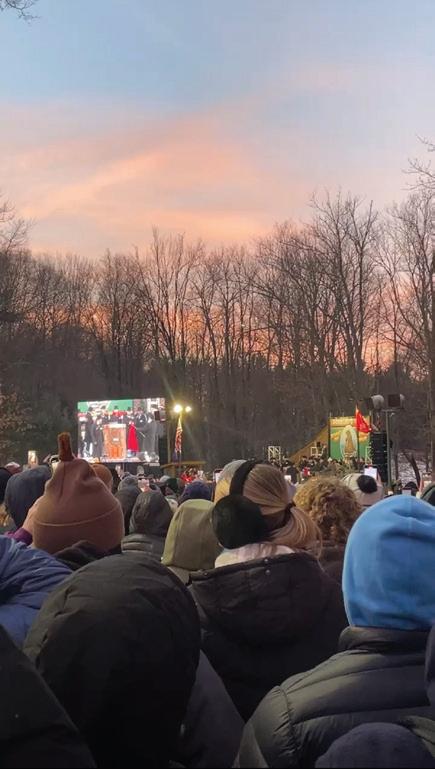
conversation in my inner circles — at least not since elementary school. I remember sitting in my parents’ room, watching the forecast on the news before heading off to school, where my teacher and peers would discuss Phil’s findings.
Groundhog Day has always been exciting to me, as it precedes my birthday, and I associate it with anticipation. Only recently, however, did I learn that its date, February 2, is a calculated choice. The tradition, celebrated in Punxsutawney since 1887, is believed to have both Germanic and Celtic origins. It aligns with the Celtic festival of Imbolc, which falls around February 1, marking the midpoint between the winter solstice and the spring equinox. The holiday, in essence, represents a transition — a glimpse of the coming spring amid the winter gloom. What I love most about Groundhog Day is that it provides a much-needed break from the post-holiday lull. January often feels like an endlessly long stretch of getting back into routine, and Groundhog Day arrives just in time to shake things up. It carries no expectations—no elaborate preparations, no mandatory gift-giving— just a simple, lighthearted reason to gather. After the chaos of Thanksgiving and Christmas, it’s refreshing to have a holiday that asks so little of you and exists purely for fun.
There is absolutely nothing logical about a groundhog speaking in “groundhogese” to a group of men in top hats to predict the weather. Sometimes, we just need an excuse to be silly, to blow off steam, and to revel in collective absurdity. I find it comforting that humans have always had an itch for silliness and a desire to connect with the natural world. Groundhog Day is a wondrously unpolitical holiday — there’s no debate to be had because arguing why groundhog’s meteorological capabilities are faulty is so absurd that it would only make you look foolish.
Much of the social media discourse surrounding Groundhog Day comments on how the holiday is an “excellent demonstration of free will.” Why ask a groundhog about the weather? Because you can. I had trouble coming up with New Year’s resolutions this year, largely because I barely know what the next year is going to hold for me, and nearly all aspects of my life will change upon graduation. A lot of stuff about my next year feels out of my control, but expressions of free will, such as asking a groundhog about the weather, bring unexpected comfort. It’s a silly reminder that I can just do stuff and am always in control of how I spend my time. Do stuff just because you can! The opportunities ahead may change, but you always have a choice.
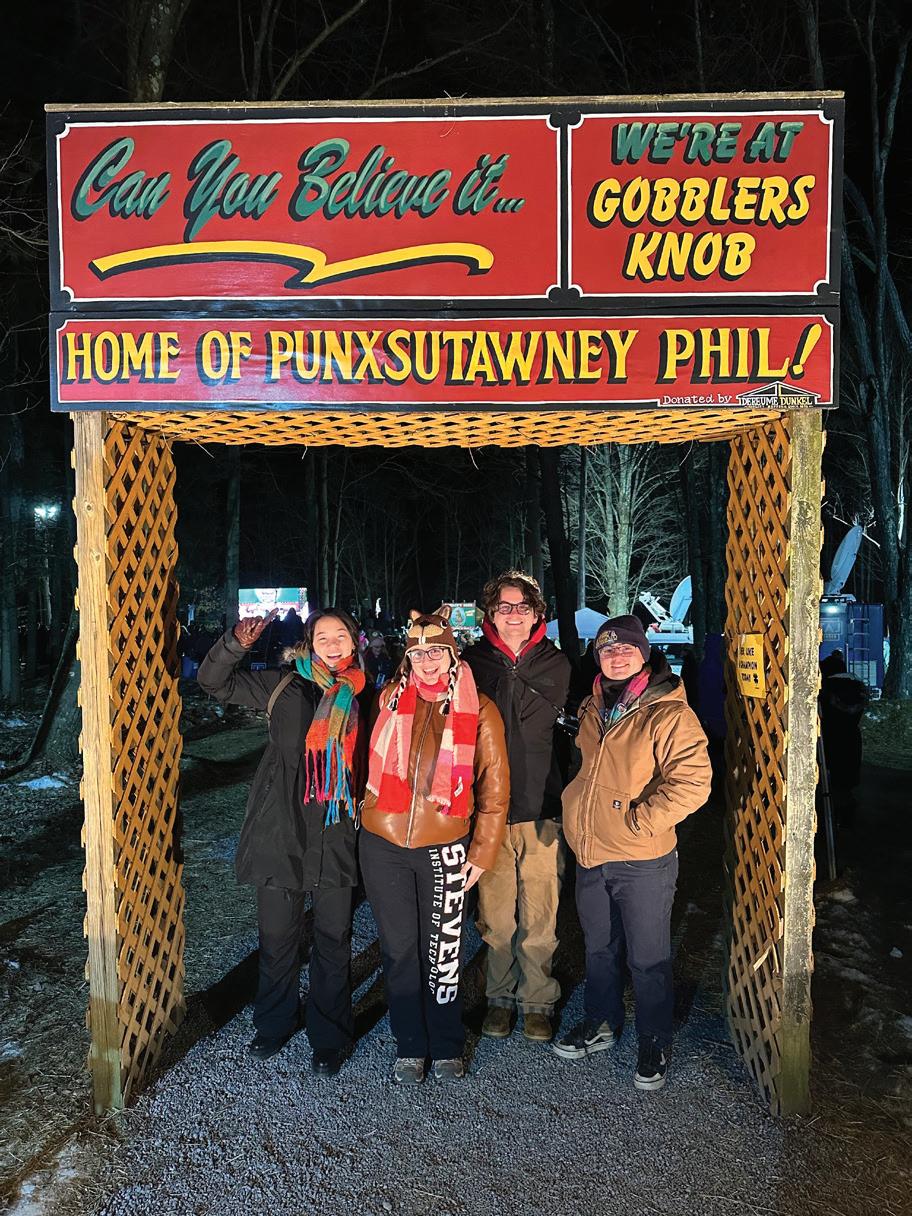
FOODIE FINDS Grounds found

BY PRISHA VAGVALA
Foodies, I found the perfect café, and I’m obsessed with everything about it: the aesthetics, the menu, the vibe. It feels like home. From the Indian poster with the South Indian phrase “Aiyo,” a painting of the lady with Veena, to the mini diorama of the café placed next to the sugar and coffee complements, everything made this place instantly click. The cafe menu items have recurring Indian flavors like rose, pistachio, and even Gulab Jamun, a traditional sweet of fried dough balls soaked in fragrant syrup. Their donuts take inspiration from these flavors, making each bite nostalgic, like a trip back home. It’s a bonus that they are a local cafe, so they take their time to ensure each drink is absolute perfection. I want to thank my friend’s roommate for recommending
their matcha because the lavender matcha was literal heaven, and it felt like I was floating into another dimension. In the past, I’ve heard the pairing of lavender and matcha together, but I never knew how well the lavender flavors complement matcha so well. The subtle floral flavors of lavender pair with the earthy taste of matcha, creating a complex flavor profile. The matcha itself tasted like it was good quality and wasn’t overwhelmingly matcha flavored but more subtle, not to mention the lavender matcha latte was perfectly sweet — not too sweet.
Most places I visit are along Washington Street, but this was in the silent location of 700 Garden Street, which made it somewhat hard to find, living up to its name: Hidden Grounds. However, when you open Google Maps, it’s a seven-minute walk from campus, especially from the gateway buildings. When you stumble upon the cafe, you will notice that the exterior of the building remains ordinary, but the real allure is all in the interior. Hidden Ground boasts a bold black-and-white patterned tile wall and a textured traditional ana -
glypta wallpaper (I don’t know the exact style, but it’s charming!) It’s a simple, chill, and thoroughly well-designed coffee shop with the perfect menu ranging from sandwiches to bakery items to drinks. Despite the matcha, they have other cool drinks like the rose chai latte, cardamom brew, and stove drinks that are peak Indian. I love that they also include vegan options, which makes it extra inclusive for the vegan folks out there; they have nice pumpkin or banana nut loaf slices that look mouthwatering. If you dislike the loaves, you have the vegan tahini chocolate chip cookie, which is intriguing. They also have pretty reliable sandwich or bagel sandwich options. But I want to take a moment to emphasize their signature drinks; the names of the drinks themselves sound delectable, like their lavender honey latte, taro latte, and hot chocolate (which my friend testified is pretty good). Overall, I admire the mix of ornate and minimalist design, where they blend their Indian roots with a chic café atmosphere, which makes the space feel both inviting and cultural, and the vintage-style decor pieces like the spice grinder.
COMIC CORNER
BY MARTINA FRANZ
‘25
‘28
PHOTOS COURTESY OF AVA WANG

The Grammynomenon
I usually think the Gram mys are superficial, and they don’t really determine the worth of an individual’s art. I think of the Grammys as something that turns a person’s art into a product. This year’s show provided a platform for empowerment. This year, it was hosted in LA, raising money for fire relief for the city. It was strange seeing millionaires and billionaires asking for donations. However, beyond that, there was an overwhelming community of support as many groundbreaking artists were given a platform to speak at a seemingly dystopic time. We have entered 2025 needing an absolute ‘Femininomenon,’ and my prayers have been answered.
Ok, so I got a little bit of a late start watching the Grammys this year because I had to combat a few paywalls and find out how to get cable from Pierce Dining Hall. I ended up missing Billie Eilish and Sabrina Carpenter’s performances. Realizing I missed Billie resulted in a severe crash out, but I was inevitably soothed by spotting Troye Sivan in the crowd for five seconds. I realized that there
would be a ton of time left to still see Billie win… Right? When I finally got logged in, more awards were announced. A lot of the artists used their speeches to address big issues. History was made with Doechii winning best rap album, an award only previously won by two women. Sabrina Carpenter won her first Grammy for her album Short n’ Sweet, later also winning for the song “Espresso.” I was personally really excited to see Chappell Roan sing “Pink Pony Club,” a love letter to LA and an embrace of Identity. It had a new meaning when I heard a huge crowd sing a song like that, as rights were actively taken away in the country. She later won Best New Artist, winning her first Grammy and speaking out about the mistreatment of young musicians. She discussed the importance of healthcare and support, especially for the youth. Saying, “Labels, we got you. But do you got us?” confronting the corruption evident in the recording academy and the industry.
Shakira won Best Latin pop album and dedicated the award to immigrants in the country. Beyonce won Best Country Album and later won Album of the Year. Lady Gaga and Bruno Mars won the best duo, and Gaga spoke in honor of the Trans people everywhere. Alicia Keys commended female producers and discussed the importance of diversity in art. She says in her speech, “DEI is not a threat; it’s a gift.” She vocalized the importance of diversity. Saying, “Music is the unstoppable language that connects us all.”
ARTIST SPOTLIGHT
Charli XCX walked with supermodel Alex Consani, who was performing “Von Dutch,” onto the stage to perform “Guess.” Kendrick Lamar won for “Not Like Us” five times, which was iconic but seriously surprised me. Billie Eilish not winning anything tonight did not sit well with me at all because Hit Me Hard and Soft is one million percent her best work, but I can write another article about this topic later.
I was excited to see Anthony Kiedis and Chad Smith when they announced. I was also super excited to see a live performance by the band Khruangbin, who was nominated for Best New Artist. I’ve been listening to them for years, so I was really excited to see them. There was also a memorial performance for the late Quincy Jones, remarking on his career and the impact he has had on the success of other artists. The show also did a memorial for Liam Payne, followed by a song in honor of many musicians who passed this year. I was greatly impacted by the death of Steve Albini, and seeing him mentioned made me incredibly emotional. The memorial was actually super sad, but I thought it was executed with honor.
There was a significant call for togetherness during this year’s Grammys, which separated the superficial elements of the awards. I am hoping music in the future behaves as a catalyst for the changes artists call for. I typically think that awards are redundant, but this year’s show was a needed example of speaking out and the importance of unity.
Isamu Noguchi and Modern Art for the Modern Era
BY ITAI GELLER
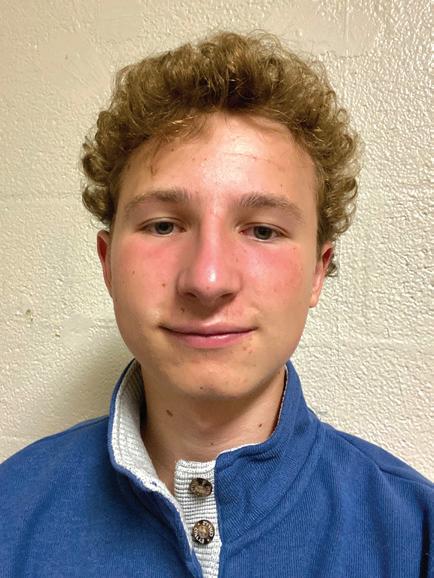
I have a very complicated relationship with modern art. Similarly to many others, I found modern art to be particularly challenging; I struggled to conceptualize the mixture of mediums and motivations that comprehensively represent this artistic movement. I would refuse to see it for anything more than a strange obelisk in a park, an odd assortment of found artifacts in a box, or those colorful Campbell’s cans that we obsess over. However, as time has passed, I’ve gained a newfound appreciation for modern art as I’ve analyzed its objectives. Modern art is similar to that of a “second enlightenment.”
During the dawn of the modern age, modern artists intensely focused on using their medium to emphasize the rejection of tradition in favor of personal expression. Modern art favored experimentation and was incredibly diverse in its approach; some modern artists created highly interactive, recognizable installations that resonated with the masses, while others chose to create unseemly, provocative works that sought to generate new perspectives. Eventually, in its stead came the contemporary era, which expanded on the concepts introduced by the modern art movement, focusing now
more heavily on recognizable social themes. While this may have been an interesting direction for contemporary art, the digital age has come to take its share of what was once an appreciable artistic movement. The infusion of technology into the contemporary landscape has made art more accessible than ever, a notable achievement, but at a grave cost. Contemporary art, in its attempts to catch up with the present, has lost itself in the sea of AI-generated Warhol wannabes and consumer culture. And so I wonder, is it so bad to ask again for elegance?
In my attempts at warming up to modern art, I stumbled across the works of Isamu Noguchi, an internationally acclaimed Japanese-American artist whose work I feel perfectly defined peak modern art. Noguchi primarily produced sculptures, furniture, and industrial design; despite his dedication to functional art forms, his works frequently had abstract elements, emotional interpretations, and modern social influences. I believe that Noguchi’s split heritage between the United States and Japan heavily influenced his pieces, with his works blending traditional Japanese craftsmanship and American modernist ideology. This also resulted in countless emotional works demonstrating his resentment of Japanese internment in the United States during the Second World War. What I appreciate most about Noguchi’s work is his dedication to re-envisioning public spaces and creating accessible interactive artwork. Many would argue that Noguchi’s art was heavily influenced by consumerism because of his col-
CO-OP COLUMN
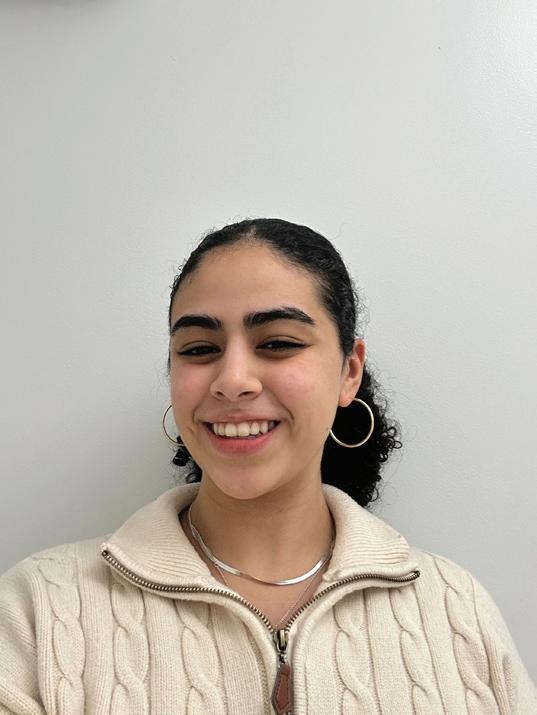
How to get a co-op (without crying at the career center)
(Even If They Make You Nervous)
Stevens hosts multiple career fairs throughout the year, including a virtual one. These events give you direct access to recruiters from top companies. Even if you don’t land an interview right away, networking can open doors for future hiring cycles.
JUBRAN ‘27
Landing your first co-op or internship is tough — it’s an uphill battle of resumes, HireVue, tests, and endless waiting. But I promise, there’s light at the end of the tunnel. Whether it’s your first job or your 30th, the process is just as frustrating. With summer internships approaching, I want to make your search a little less stressful. Here’s a guide to help you navigate the chaos.
1. Start Early—Earlier Than You Think If you haven’t started yet, don’t panic — it’s never too late. Just start now! There’s no “perfect” time to apply. If you wait until March or April, you might find fewer openings, but you could also get lucky with last-minute hires. The key is to be proactive. Where should you look? Handshake is a great starting point — Stevens pays for it, so use it! LinkedIn is another solid option, though I personally prefer Handshake for internship and co-op searches.
2. Go to Career Fairs
Beyond the Stevens career fair, many student organizations host their own.
SHPE, SWE, SWIC, ACES, and others run industry-focused fairs and career prep workshops that can boost your chances. Even academic departments like STEP and CEOE hold their own career fairs, so always keep an eye out for opportunities.
3. Perfect Your Resume and LinkedIn
There’s no one perfect resume format — every recruiter has different preferences. Instead of stressing over perfection, focus on clarity, quantifiable achievements, and Applicant Tracking System (ATS) compatibility. Many big companies filter resumes through software before a human even sees them, so run yours through a free ATS checker to improve its chances.
LinkedIn is just as important. Many recruiters check profiles before reaching out, so keep yours updated yearround!
laborative efforts on projects such as Herman Miller’s ‘Noguchi Coffee Table’ and Ozeki & Co’s ‘Akari Lamps.’ While this is a fully defensible position due to their incredible cost, Noguchi’s contribution to these and similar consumer products redefined modern furniture and featured a level of experimentation, craftsmanship, and quality that most would desire in a time of senseless mass production.
My favorite piece by Noguchi is ‘Fence with Branches, a work I feel encompasses the focus of Noguchi’s artwork best and the modern art movement as a whole. ‘Fence with Branches’ is a minimal work featuring two twigs attached to a triangular wooden structure. While the name is figurative, the piece itself can be interpreted in many ways. While Noguchi calls it a fence, it couldn’t serve this purpose because a viewer could walk around it on both sides. I believe Noguchi is attempting to suggest that the way we perceive challenges in our lives is simply based on perceived restriction, not actionable change — all of this communicated through a simple wooden contraption.
So, what am I getting at here? Ultimately, I believe that, like myself, many others simply appreciate elegance. Noguchi’s work demonstrates that modern art can create profound and meaningful compositions without sacrificing individuality or succumbing to the substandards of the digital age. Many dismiss modern art for its perceived simplicity, but as Noguchi showed, that simplicity is only as limiting as one’s willingness to search for deeper meaning.
UNMASKING: AN AUTISM STORY
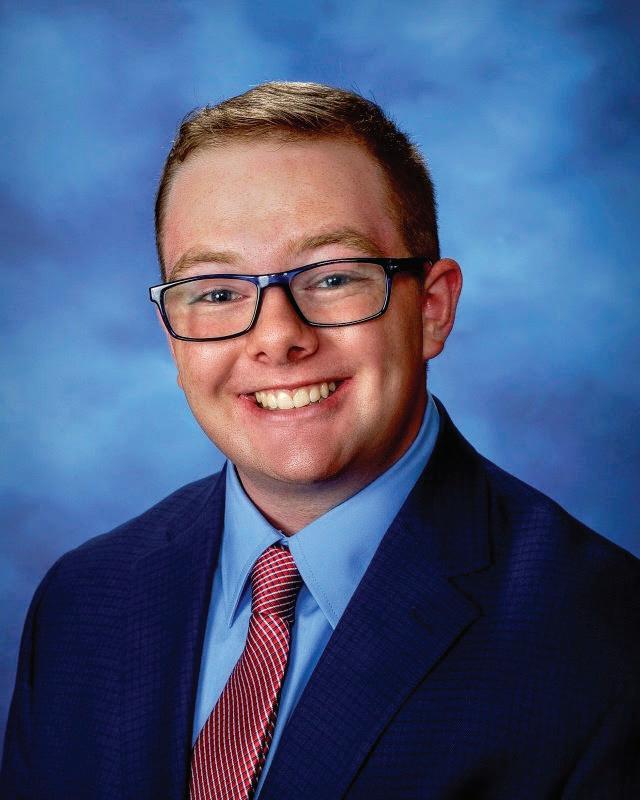
BY EVAN PAPAGEORGE ‘26
As we know from the many, many weeks of articles in this column, autism spectrum disorder (ASD) combines differences in cognition and social interaction with fundamental aspects of perception, including the experience of time. Time perception differences among autistic individuals shape their ability to process events, manage daily routines, and engage in social interactions. These variations are not uniform but depend on context, sensory input, and cognitive load, leading to challenges and strengths.
Many autistic individuals report difficulty estimating time duration, making it hard to plan tasks, transition between activities, or adhere to schedules. Some describe time slipping away unpredictably, while others feel trapped in indefinite moments. This altered perception can contribute to anxiety, particularly when external expectations about time clash with internal experiences. These differences can create significant stress in structured environments like school or work, where time constraints are rigid. Research suggests that autistic individuals may experience time at a different speed than their neurotypical peers. Some studies indicate that time may feel slower, over-
Rejection is part of the process — every “no” gets you closer to a “yes.” Keep track of your applications to stay organized. Whether it’s using an Excel sheet, email folders, or a tracking system from the Career Center, find a method that works for you.
5. Consider Research and On-Campus Jobs If landing an internship or co-op isn’t working out, consider research opportunities at Stevens. They’re often less competitive, look great on a resume, and help you build connections with professors. On-campus jobs—especially those that offer technical, leadership, or project-based work—can also strengthen your application for future internships.
Final Thoughts Finding a co-op or internship takes effort, persistence, and strategy — but it’s 100% doable. Use the Career Center, network with alumni, and apply widely. Whether it’s your first internship or your dream co-op, the right opportunity is out there waiting for you. So don’t get discouraged — reach out, ask for help, and keep going. Someone will help you get where you need to be!
4. Apply Everywhere and Anywhere It’s a numbers game. Apply to hundreds of positions, not just five or ten. Customizing your applications is great, but don’t get stuck perfecting a single one while missing out on others.
The fleeting, or infinite, traps of time perception and autism
whelming, and fast-paced, leading to delayed conver
sations or activity responses. Others suggest that time may feel accelerated in specific contexts, such as during highly engaging or repetitive activities. These variations highlight that time perception in autism is not universally impaired but uniquely shaped by individual neurology and environmental factors.
Timing inconsistencies also affect memory and sequencing. Many autistic individuals struggle with recalling the order of events or predicting what will happen next. Autobiographical memory, in particular, may be fragmented or nonlinear. To compensate, many rely on routines, external cues like alarms or visual schedules to structure their day. While these strategies can provide stability, disruptions to expected timelines can cause significant distress.
Social interactions, which rely heavily on an intuitive sense of timing, are also impacted. Conversations require understanding when to speak, pause, and respond, which can feel unpredictable for autistic individuals. Taking slightly too long to answer a question may be misinterpreted as disinterest while struggling to enter a group conversation at the right moment can lead to feelings of exclusion.
Additionally, delayed verbal information processing may further complicate communication, making interactions exhausting. Sensory sensitivities further shape time perception. For those with heightened sensory processing, distressing stimuli like loud noises or bright lights can make moments unbearably long,
explaining why chaotic environments can be overwhelming. On the other hand, engaging in special interests or repetitive behaviors, often called “stimming,” can create a sense of time distortion, where hours seem to pass in minutes. This highlights the deep connection between attention, sensory experiences, and the perception of time. Despite these challenges, some autistic individuals display remarkable strengths related to time. Specific individuals excel in tasks requiring precise timing, such as music, mathematics, and pattern recognition. The ability to hyperfocus allows some to work on projects with extraordinary precision, demonstrating that differences in time perception are not just difficulties but aspects of cognitive diversity. External strategies such as visual schedules, timers, and structured routines can be highly effective in helping autistic individuals manage time-related challenges. Schools and workplaces can foster inclusivity by allowing flexible deadlines and reducing unnecessary time pressures. Cognitive-behavioral strategies may also help develop coping mechanisms for time-related anxiety. Recognizing and accommodating differences in time perception is essential for creating more inclusive environments. Rather than deficits, these variations should be part of the broader spectrum of human cognition. Further research into the neurological basis of time perception in autism can provide deeper insights, ultimately helping to shape better support systems and foster environments that respect and integrate neurodiverse experiences.
‘26
Opinion

My thoughts as a woman trying to survive the next four years
his followers, “Which category of people’s lives will I make harder,” I rank relatively high both as a woman and as a person of color. From my perspective, I see that a lot of others, especially those from minority groups, feel the same way.
BY TANYA AVADIA ‘26
the thrill of the New Year are now behind us. It is of ficially 2025, and the New Year also means that we now have a new president in office. People feel many different emotions regarding Donald Trump’s inauguration as the 47th President of the United States, and I personally am at a loss. On the totem pole of Trump and
Trump becoming president for the second time almost feels unreal because when I think of the role of the President of the United States, I think of someone of strong character who is representative of the people, and even if they cannot directly relate, they are empathetic and educated enough to understand their constituents. Trump’s character does not embody this at all and is actually far from it. Especially with regard to women, he does not have the best history.
BOOK OF THE WEEK
Tragic love with The Broken Wings
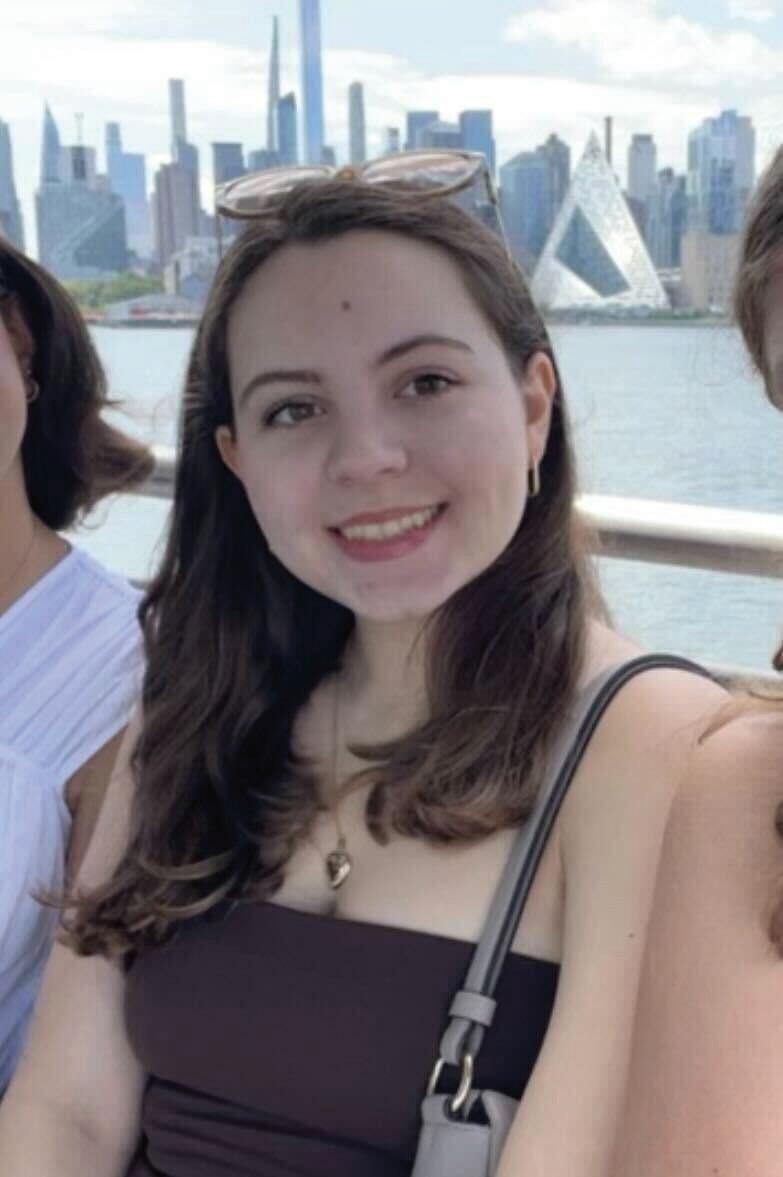
Kahlil Gibran is a poetic classic love story from the early 1900s. It is a short book, under 150 pages, about a love between a doomed couple. The novel takes place in early twentieth-century Beirut, Lebanon, and details a tragic love story between our narrator, who most likely represents Gibran himself, and a woman named Selma, who is engaged to a wealthy man’s nefarious nephew. While the novel is about their love, the book is not necessarily a romance. It is more about their ill-fated relationship and the tragic turn that befalls them.
It follows a young man who reconnects with an old man who used to be close to his father. In reconnecting with him, he meets and quickly falls in love with the man’s daughter. However, because of the older man’s flaws and honest mistakes, their relationship takes a heartbreaking turn. Selma is also promised to an awful man’s horrible nephew. Their separation and eventual doom play out throughout the novel, and it details an unfortunate end to their all-encompassing relationship.
The narrator is designed after Kahlil Gibran himself, but there is no evidence the story itself is factual in any case. It is more likely that Gibran used himself as inspiration for the main character, which makes him more sympathetic in his plight of heartbreak. The fact that he is unnamed adds to this as well, as it is easy to imagine yourself in his shoes and experience the heartbreak and tragedy firsthand. The story feels more personal with this choice because it allows you to experience the story from both your own and his perspective.
The Broken Wings is great if you want to explore more classic novels and
For example, the 2005 recording leaked of Trump stating “grab ‘em by the p*ssy” is a very misogynistic statement that eludes to sexual assault. I cannot fathom how it is acceptable for someone to become the President of this country after having said and continuing to say such vulgar and hateful rhetoric about half the population. Along with this, it hurts me as a woman to know that there were several allegations of sexual assault, harassment, and unwanted touch against this man, and yet he is our President. I cannot imagine what any of those victims feel knowing that this is the person who won the popular vote in addition to the electoral college.
Moving past Trump’s background and into
Trump’s policies, he has already gotten started on undoing a lot. For example, Trump has rolled back on several measures, making reproductive healthcare such as abortions restricted. Ever since the landmark case Roe v. Wade was overturned, many fear that their ability to safely access reproductive healthcare will be jeopardized. If he came after abortion, there is no doubt that he will come after many other provisions and rights that our ancestors fought for not that long ago. On that note, one of Trump’s first acts after returning to office was to issue an executive order defining that there are only two sexes. This effectively erases the recognition of the transgender community and has severe effects
ASK ERIN AND NICOLE
How do I
more translated fiction. The story is easy to follow, and since it is a short novel, it is quite easy to finish.
The love story between Selma and our protagonist is interesting and is easy to fall for. All of the dynamics between the characters are compelling, and it makes you want to finish the story faster. The relationship between Selma and the narrator is both lovely and heartbreaking, living up to the tragic tale it is supposed to be. The length of the novel also makes it simple to finish and appreciate. The fact that the novel is so short is not a detriment to the novel but a positive. The rise and fall of their relationship plays like a classic epic, adding further emphasis and credibility to the shortness of their romantic affair. It reads like a tragic poem, which benefits the overall story. I feel that if the novel were longer, it would cause the story to drag and lose its momentum.
However, one slight detriment to the novel could be its prose and writing style. Not only is this a classic novel written in 1912, but it is also a novel that has been translated from Arabic. While the language is accessible and fairly easy to understand, there is a possibility that certain translations may be a little wonky and will not flow as intended. Even if the translation is good, which most are, it was still written in the early twentieth century. However, the prose should still be easy to follow, as the poetic nature of the writing style is purposeful. Gibran’s other works follow a similar style in their composition. I actually enjoy the way that he writes because while it is not challenging, it allows you to engage deeper with the story as it makes you focus on what is being said.
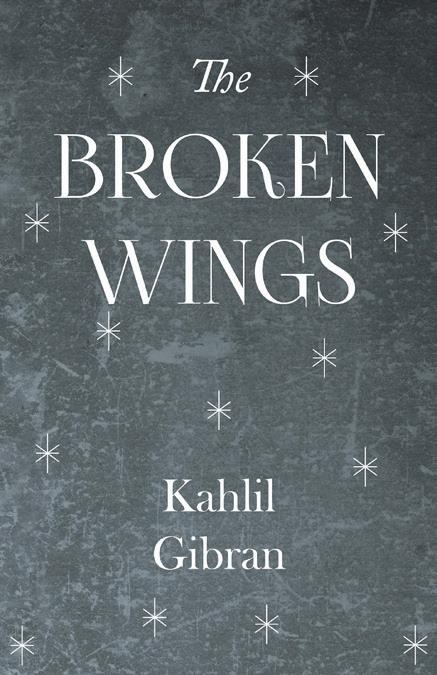
on their rights, safety, and well-being.
My only question on all this is: why? Why are these the top priorities of the new administration? America preaches freedom, and with freedom should come the ability to make decisions on your own accord. I fail to understand why such matters are even focused on by any governmental authority. As someone who reads the news regularly and has my own grievances about the problems in our society, I’m genuinely curious as to why bigger issues aren’t addressed. Issues such as the extremeness of natural disasters, such as the fires in California, the high cost of living, and the normality of gun violence are all things that I believe should be addressed with the utmost
resolve my roommate attachment issues?
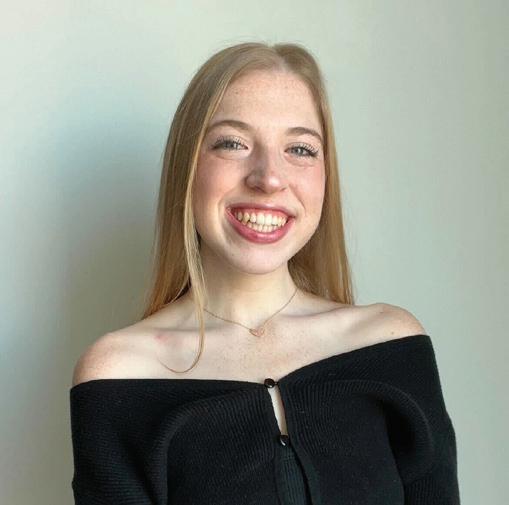
BY NICOLE GIARDINO, SECRETARY
Welcome to Ask Erin and Nicole! For those of you who may not know us, I’m Nicole — a fourth-year Mechanical Engineering major, robotics and drones nerd, and scarily obsessed with Disney. Erin, on the other hand, is a fourth-year Physics and Math double major and basically my complete opposite. I’m social (cough cough… blonde), loud, and thrive on talking to others, while Erin is more of a lone wolf who loves reading and everything about physics. And yet, somehow, we’re inseparable. I met Erin going into our freshman year on Instagram, where we talked about our shared love for the musical Dear Evan Hansen, and we have been roommates ever since! YES, FOUR WHOLE YEARS! (I have no idea how she’s not sick of me… yet). That brings me to today’s question: How do I resolve my roommate attachment issues?
Speaking from experience, I am very attached to Erin — I basically live inside her brain. But over the years, I’ve learned a few things to keep myself from spiraling every time she leaves the dorm. First, weekly roommate debriefs are a must. Setting aside a time to catch up, vent, and overshare about everything the other has missed is non-negotiable. Next, floor time and ice cream are essential for processing life together. There’s nothing quite like laying on the floor with the superior ice cream (Signature’s Salted Caramel vanilla ice cream with chocolate caramel cups from ACME — trust us, it’s so good) and just talking about everything. Finally, I’ve had to accept the hard truth that your roommate has a life outside of you. It stings, but once you embrace it, everything becomes easier — and honestly, it makes your debriefs even better. When Erin leaves for grad school next semester, I know I’ll feel like a piece of me is missing. But when we reunite, our debriefs and floor time will be even better than before.
So, if you’re dealing with roommate attachment issues, take a breath, set some traditions, and let them be their own person (and if you’re anything like me, brag about them to everyone). And if all else fails?
Bribe them with ice cream.
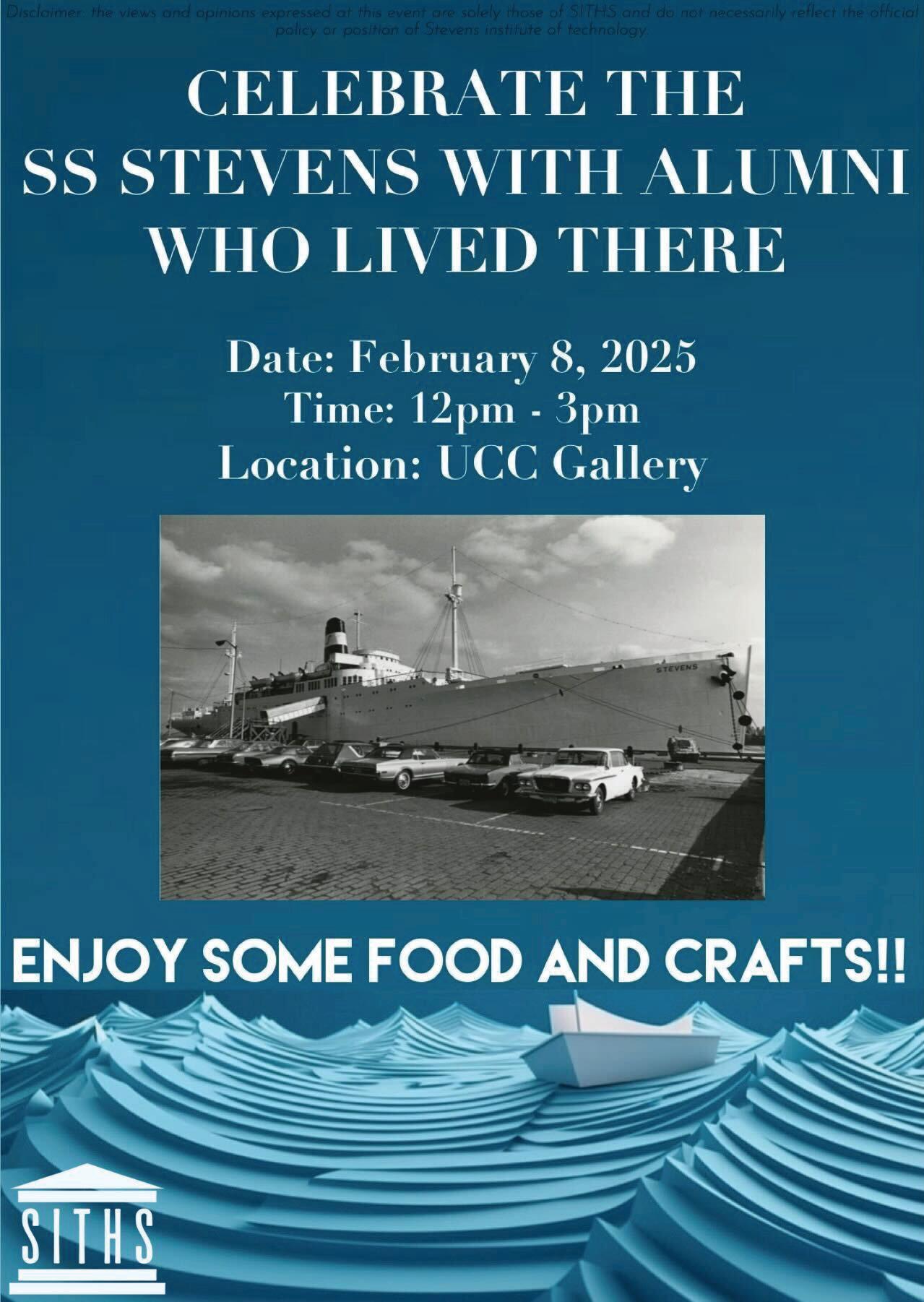
priority. The problem is that they are not.
Going forward, however, I encourage everyone to stay strong and work together. There are a lot of us and only so many of them, and if we put them in power, we have the ability to put them out of power. In the meantime, we should stick together and raise our voices as much as possible. Even if it means doing small things such as staying educated on the happenings of our world. Being a woman has always been hard, and while we are insanely lucky to have all the freedoms we have now, let’s not forget the work done by our grandmothers and great-grandmothers to get us here. And let’s protect these rights for our future generations to come.
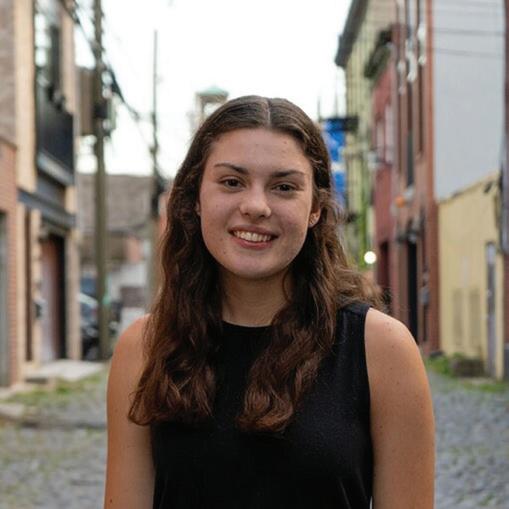
BY ERIN MCGEE, SCIENCE WRITER
How do I resolve my roommate attachment issues?
This is an issue I’m grappling with at the moment. I’m in the last semester of my senior year, standing on the precipice of graduate and job applications and, therefore, the possibility of moving to a new city. This will hopefully bring a lot of exciting change and new possibilities, but I am leaving behind a lot of things in Hoboken that I am sad to leave. One of these things is my roommate.
While looking for a roommate after I committed to Stevens, I had an idea of who I wanted. A quiet, solitary person with an I-won’t-bother-you-if-youdon’t-bother-me attitude. If you’ve met Nicole (and you probably have; she talks to everyone), you will find she does not necessarily fit this description. Nonetheless, I couldn’t be happier living with her. She has been there for my highest
highs and lowest lows and for every part of college in between. She’s become one of my closest friends, and navigating the next chapter of my life without seeing her every day will be hard. For anyone else afraid of moving on from old friendships, there are some steps you can take to minimize the blow. One thing you can do is to make the most of the time you have left. This can include city trips, dinners, or even starting a Stute advice column with them. It’s also important to remember that the end of college is not the end of a friendship: there will always be opportunities to visit and stay connected with old friends at Stevens, no matter what the next chapter brings. It’s important to remember old traditions and memories as well as to keep an open mind to -


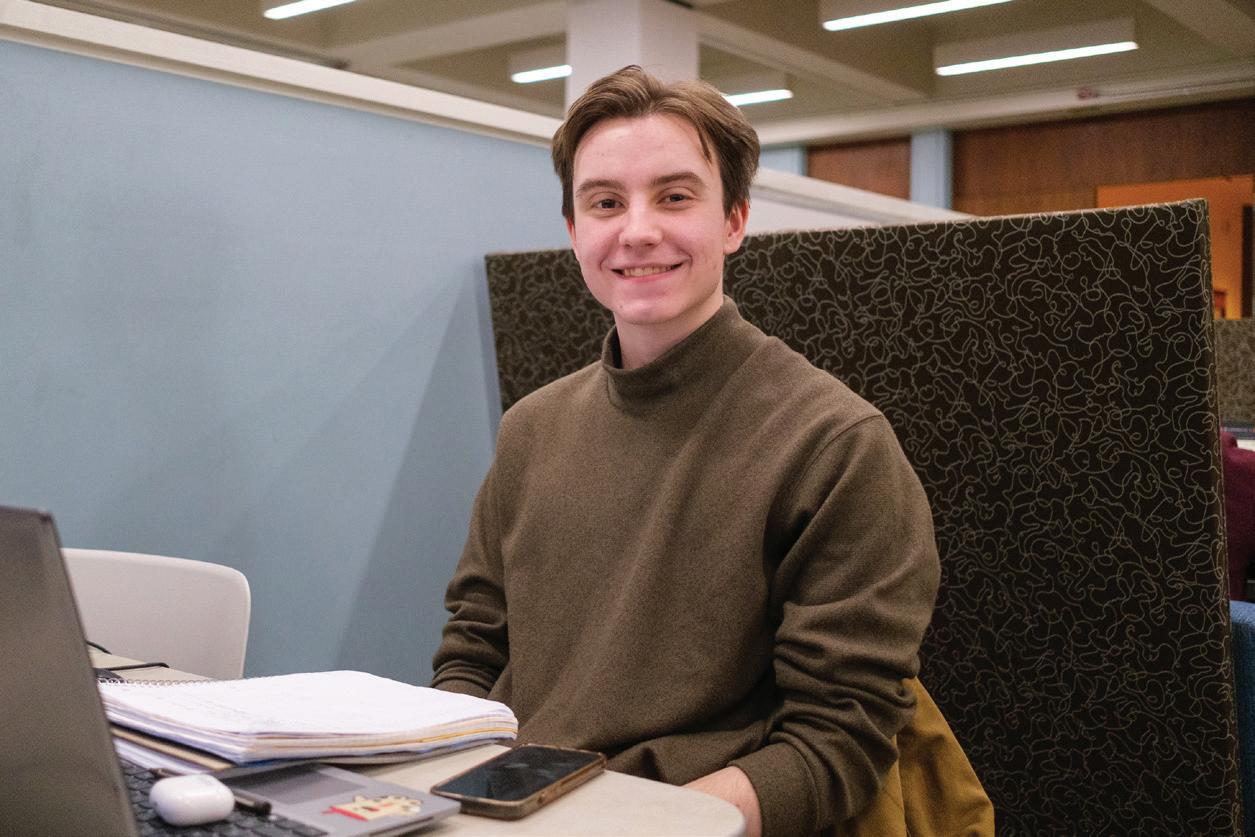
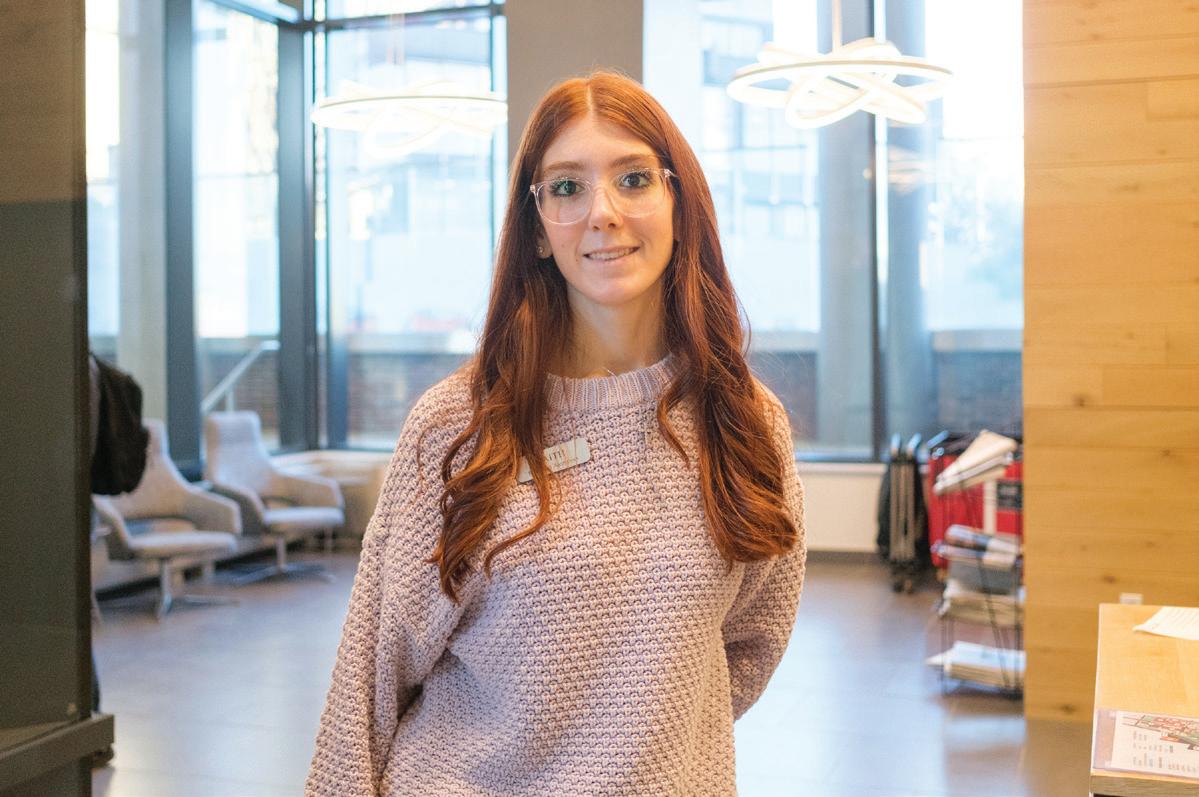
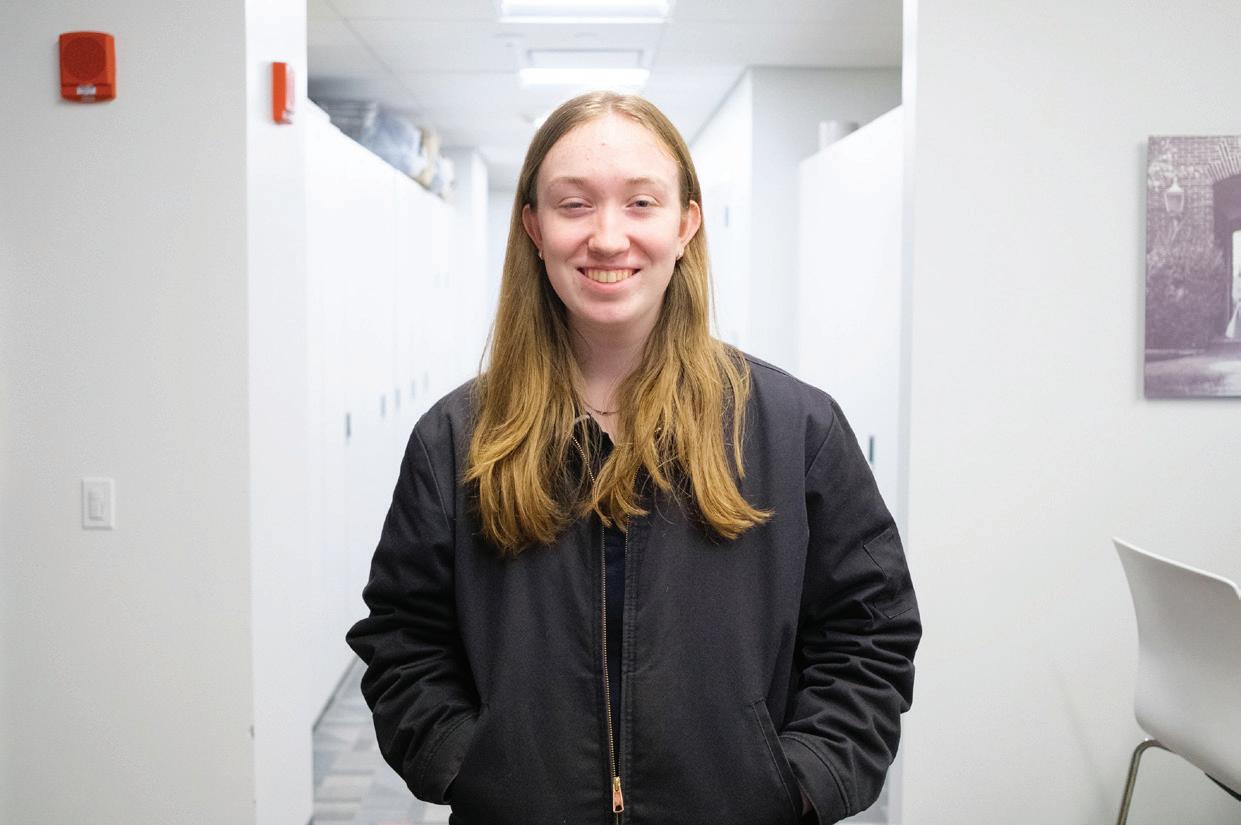
ROVING REPORTER
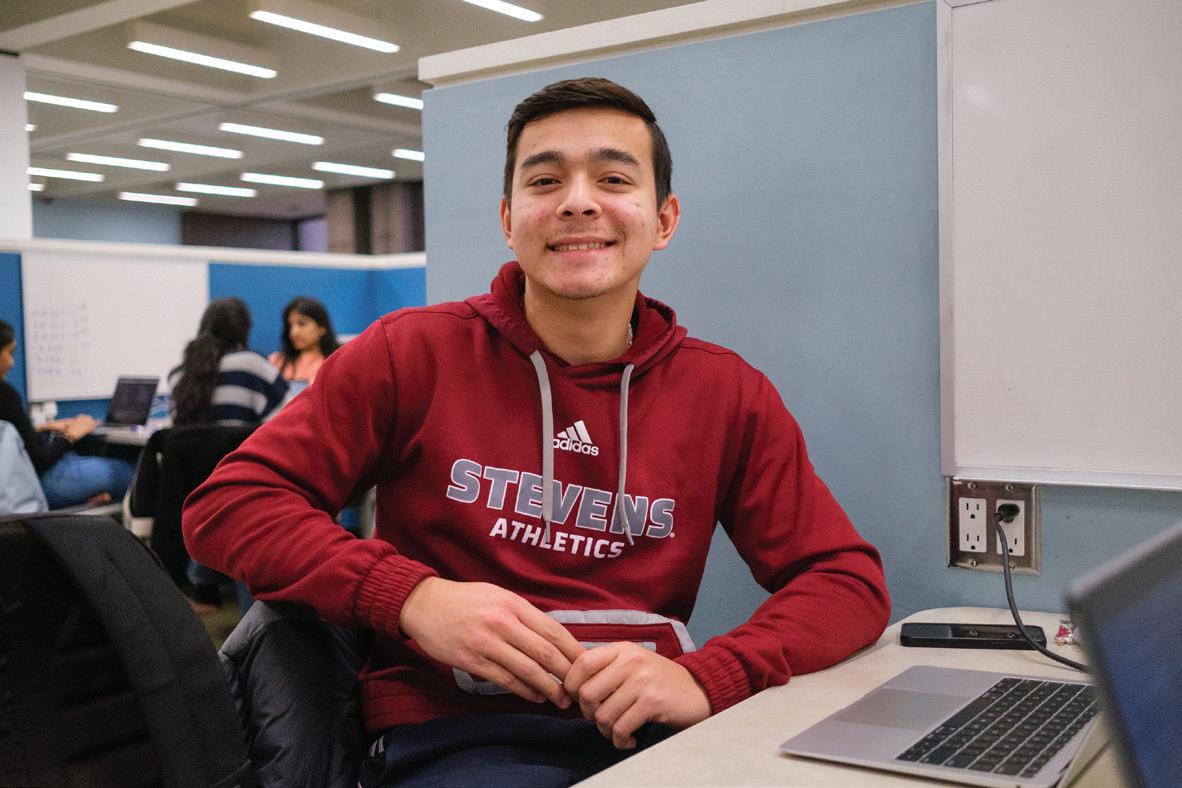
By Rafael Lee Li and Mia Petrolino
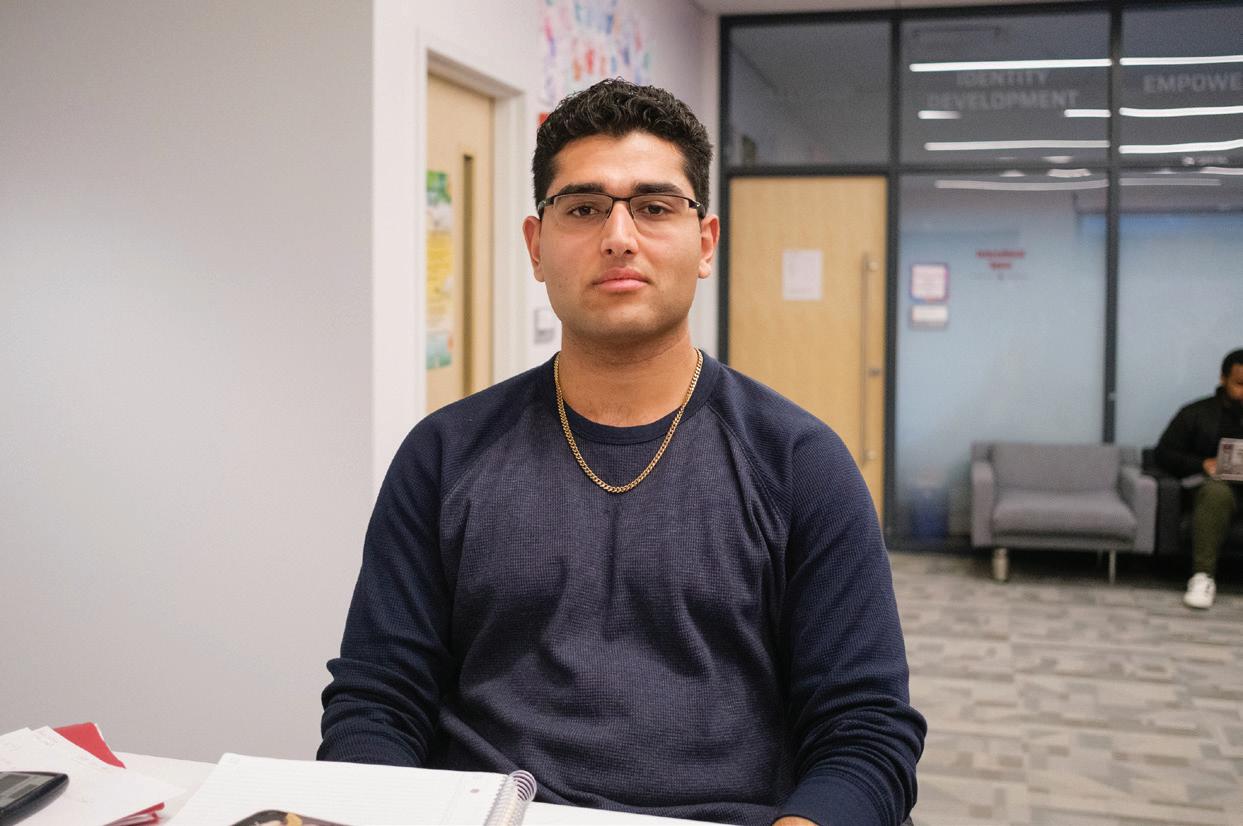
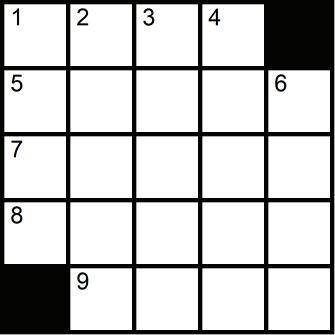
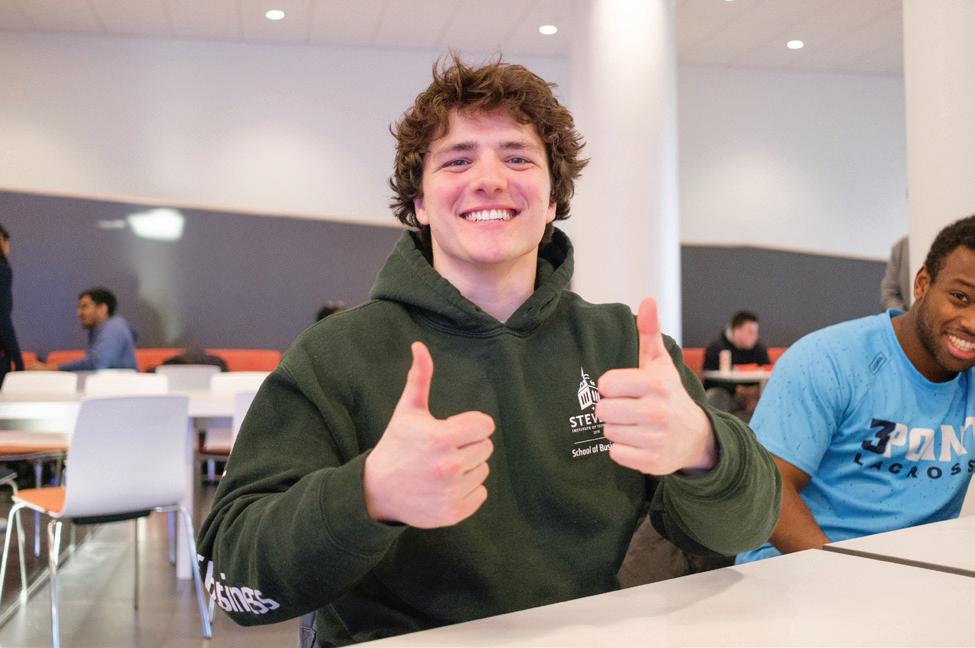
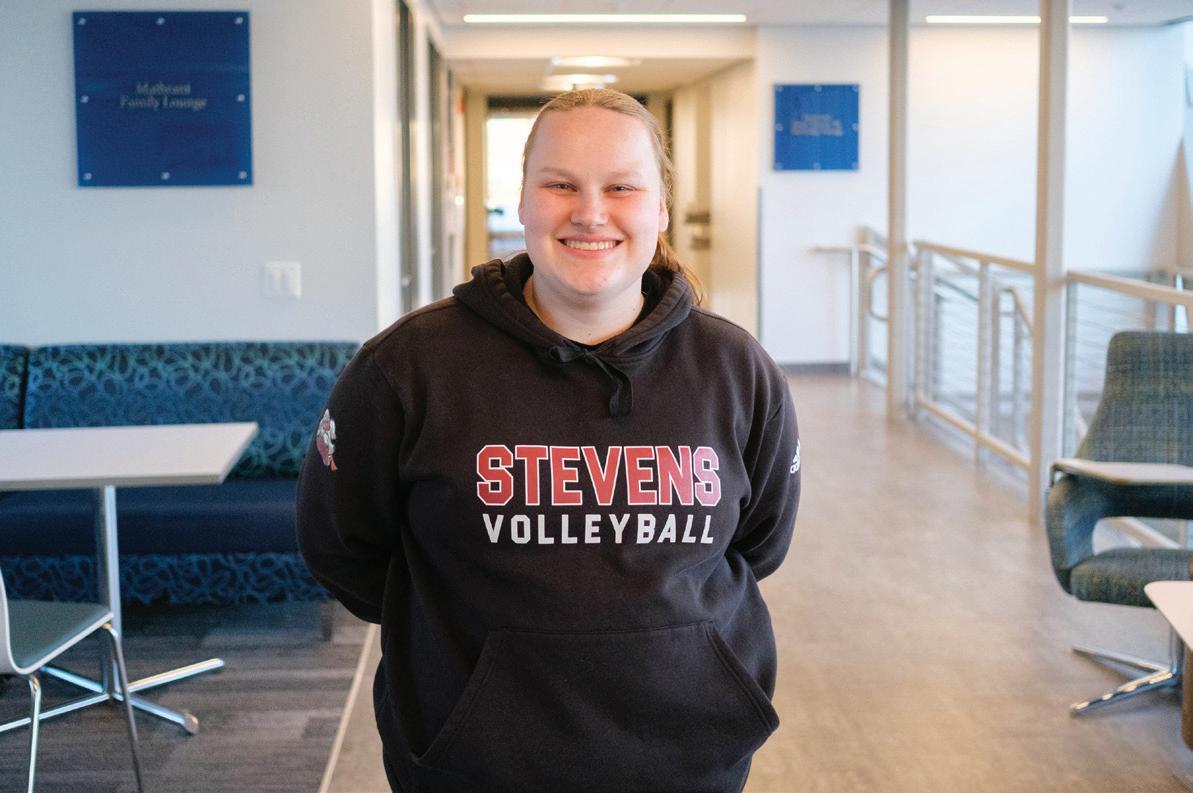
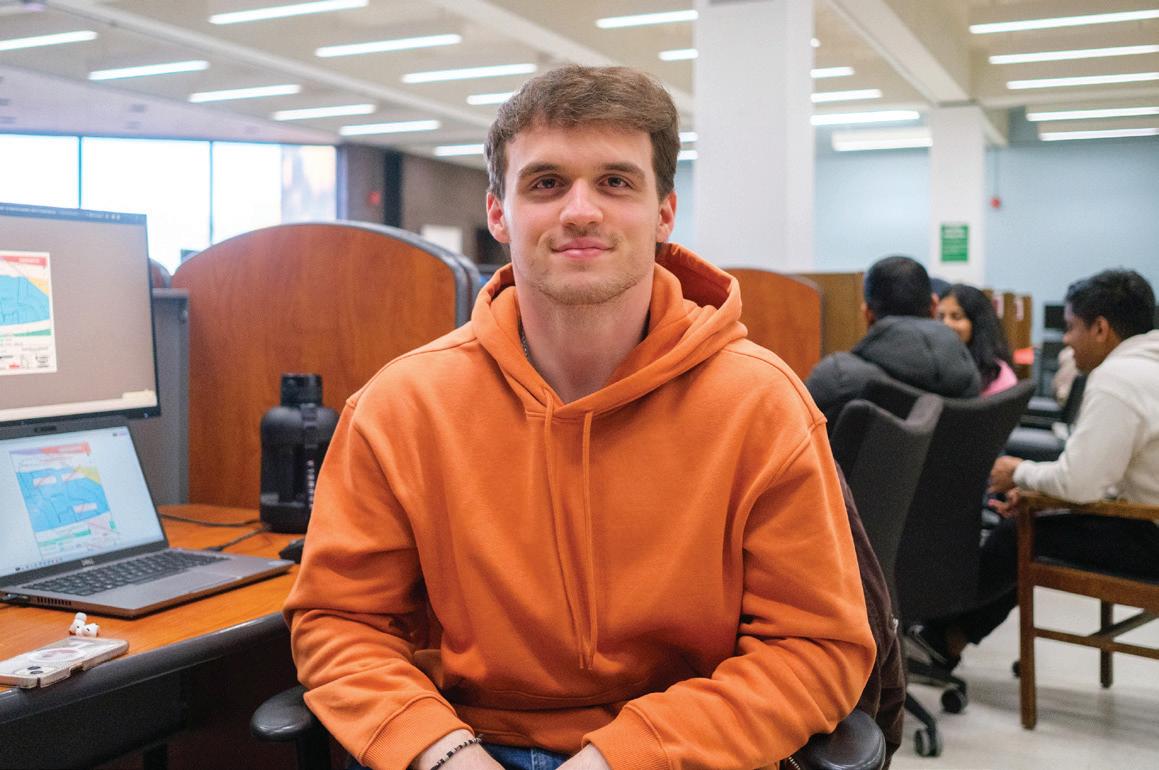
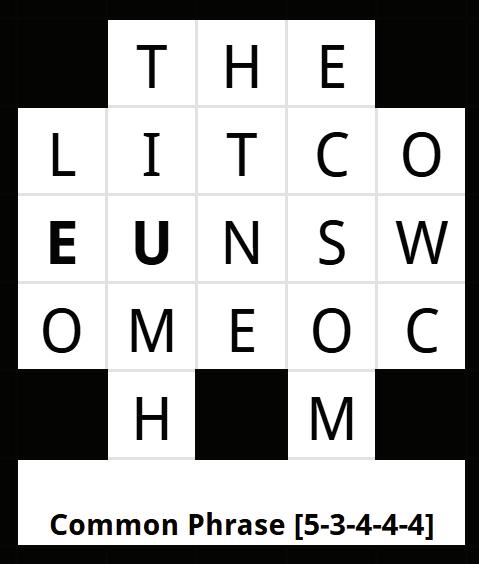

Bridget Webb ‘26 “The Eagles... Because I’m sick of the Chiefs”
Justin Gajewski ‘27 “A nice nap.”
Matthew Nixon ‘27 “Kendrick Lamar.”
Neylan Preetanchal ‘26 “Taylor Swift Cam.”
Paulina Miller ‘26 “Halftime Show for sure. I’m a Commanders fan.”
Faith Macchione ‘26 “Halftime Show. We had this game already.”
Andrew Becton ‘28 “Not watching.”
Drew Crossman ‘26 “Eagles. I grew up watching the Eagles with my grandfather. He cried when they won in 2017.”
